The Status of U.S. Oil Production
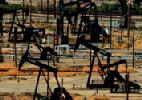 Why has the U.S. mainstream media stopped cheerleading the fracking boom? Looks like production is no longer booming.
Why has the U.S. mainstream media stopped cheerleading the fracking boom? Looks like production is no longer booming.
 Why has the U.S. mainstream media stopped cheerleading the fracking boom? Looks like production is no longer booming.
Why has the U.S. mainstream media stopped cheerleading the fracking boom? Looks like production is no longer booming.
 Recently Donald Trump accused Germany of being dangerously dependent on fuel imported from Russia. The Russian foreign minister has responded to this sally by pointing out that Germany is still occupied militarily by the United States Army. As for importing fuel from Russia, Germany has done so for over 50 years, reliably, without interruption due to political differences. Trump wants to sell fracked fuel from the US to Germany and other parts of Europe. Inside is a video with the Russian foreign minister's comment.
Recently Donald Trump accused Germany of being dangerously dependent on fuel imported from Russia. The Russian foreign minister has responded to this sally by pointing out that Germany is still occupied militarily by the United States Army. As for importing fuel from Russia, Germany has done so for over 50 years, reliably, without interruption due to political differences. Trump wants to sell fracked fuel from the US to Germany and other parts of Europe. Inside is a video with the Russian foreign minister's comment.
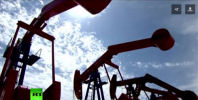
While the freefall of oil prices seems to have stopped for now, the inevitable rise of energy demand from developing economies may turn the current overflow into a critical shortage. How long before oil becomes a treasured resource in major demand again? And with new technology coming into play, how will the energy market affect our lives in the coming decades – will it fuel growth or new conflicts? Former Executive Director of the International Energy Agency Nobuo Tanaka is on SophieCo.
Follow @SophieCo_RT
Sophie Shevardnadze: Nobuo Tanaka, the former Executive Director of the International Energy Agency, great to have you on our show. Welcome. So, in response to the low oil prices, what we’re seeing right now is companies are canceling new projects, investment is stalling, infrastructure is not being updated. The International Energy Agency says oil projects are at the lowest level in over 70 years. Right? So what I’m wondering - now we’re seeing an oversupply of oil, but without development, should we be bracing for a global shortage instead?
Nobuo Tanaka: Well, if the investment is declining these consecutive years, possible for the third year in this year, if that’s the case, the capacity will not increase as much to the level of the demand in the future. When economic growth is happening in emerging economies, we’re going to have a shortage. So the IEA is very concerned that low oil price is signaling the wrong idea for the investors in the energy sector. And almost all energy sector may have a small level of capacity increase for the future.
SS: Just lately OPEC dominance on the oil market was offset by the US shale oil production - and despite lower oil prices, the US shale oil production is still going strong.
NT: That’s true.
SS:Has OPEC - and Saudi Arabia - have sort of lost control of the oil market?
NT: Well this is interesting situation. Suddenly Saudi Arabia challenged the shale from the Unites States - how resilient it is. So Saudi kept the share of the market or in some level of the production and the price collapsed. So the shale started declining in 2015-2016. But thanks to the demand coming up and also OPEC countries together with non-OPEC like Russia tried to reduce the production from early this year. So the price is coming up. Now that shale production is recovering. So it is kind of testing the resilience and how far the price can go down to stop the shale production or not. This is a very new situation, nobody knows how strong, how resilient the shale is. So, you know, in a sense, the shale production is challenging OPEC policy. So OPEC is changing their policies, shale is changing. This is a kind of interesting area.
SS: So it’s interesting to see what the new reality is going to be, because we see the U.S. shale and OPEC officials meeting recently at the recent OPEC meeting. How do you think they are going to coexist? U.S. shale and OPEC? Or is there another battle in the cards?
NT: Well, the shale is increasing probably for some decades but not more than that, because shale development is a new technology and new potentials, but gas may continue longer, but shale oil may not stay forever. While the OPEC countries especially in the Middle East have huge resources. And definitely this is a short-term or a mid-term situation, not going forever, so Russia has huge potential and also Russia and Middle East have shale potential also. But you don’t need to, I mean, OPEC countries, Russia are not necessary to invest into the shale even though there’s the resources.
SS:Because they have so much resources...
NT: Exactly - conventional crude. So this is a kind of coexistence of different technologies in a different location in a similar market, so we will see.
SS:But for those countries, like the United States, who are still big on shale production, questions remain about the safety of shale oil and gas extraction.
NT: Environmental impact…
SS:Fracking has been proven to cause minor earthquakes, water pollution - so the environmental damage is absolutely undeniable. The question is are we going to ignore this damage and go for the profit?
NT: Yea, that’s a very good point. Certainly we cannot ignore the negative impacts by the development for the environment or safety issue. So the shale companies must invest for a much stronger or safer way of development and also prepare to stop the environmental pollution. So the cost of shale will increase by doing so. So by doing so the shale is getting less competitive technology.
SS: You know, I was thinking about this lately with oil resources slowly shrinking, you’d expect countries who are rich in those resources would be very well off. But then, you know you look at Venezuela, you look at South Sudan, you look at Gaza Strip, you look at Nigeria - and these countries are completely torn apart and they’re very poor. So it makes you wonder - is having oil or gas reserves a blessing or it’s actually not that good for a developing country?
NT: Well, some people say - “the resource curse”, because of the rich energy resources like oil, gas. If the country is not using the revenue for better purposes like reinvesting into the oil field or technologies or education of the people or the new industries, the country may suffer - if the location of the revenue is not in a good way. Just spending or wastefully consuming more, by controlling the price of oil lower in the domestic market rather than the wholesale market in the global, then you are just wasting the very important resources you are given by the God. So it’s a matter of the policy - how you spend wisely the revenue for the improvement of the future generation of the country. So this is a tough competition. Some of the producer countries like Norway or United Arab Emirates, even though they are small but they reserve some part of the revenue for investing for the future. This is a very clever way of using the huge revenues.
SS: But a vital resource like oil is a perfect conflict-starter, especially if you take into consideration that the population is growing and the resource in itself is shrinking do you feel like we’re going to see more wars break over it? And where geographically? South China Sea? Maybe Latin America?
NT: Yeah, sometimes the energy or the resources were the reason for wars, for conflict before in history. It is inevitable that for the sake of economic growth resources are very important, but now technologies make it very different - the energy situation now. The renewable sources like solar,wind are everywhere, nuclear power is very popular among emerging economies, even energy conservation is a very good way to increase security or efficiency. So with these new technologies some countries, even the Saudi Aramco is concerned that the decline in demand of petroleum may come sooner than later. Because peak concept is applied to the supply side, but the demand peak may come earlier, because I still remember the very interesting quote of the Saudi oil ministry Zaki Yamani, who said ‘The stone age was not over because we ran out of stones, so the oil age may disappear even though there's plenty of oil’. Because of the new technologies, the new energy resources...So, how to invest into the different new technologies is very important thing for the governments, oil producers should do.
SS: So you feel like the demand for oil may disappear while it’s still there?
NT: I think so. When will it happen? This is a very interesting question - I was asked this question in a very interesting way by Saudi Aramco. I said maybe it’s before 2030. Because in 2030 China will peak out the carbon dioxide emission in the COP 21, that means they will reduce consumption of coal, but probably oil also. If the largest consumer of oil will stop increasing the use of oil, this could be the peak demand of oil. Of course there are many emerging economies like india, African countries, some other Asian economies will continue to use for sure.
SS: You’re right because China has rolled out a plan to have a fifth of its car sales electric by 2025. And then alongside China you have India who wants to go fully electric by 2035. So you wonder what’s going to happen to the energy market, right? Because they are the biggest consumers.
NT: So I don’t know when, but we have to prepare for the situation like that. Consumer countries, as well as producer countries we have to prepare for the risk that these kind of big changes may happen in the energy market in the future.
SS: But you know, if things go according to your scenario, you’re wondering why people are looking for places to dig and drill. For instance, with the industry barely recovering from the oil slump, we see America drilling in the Arctic, Norway - in the Barents sea. And in places like the Arctic resources aren’t very easy to extract and it’s very expensive...
NT: Costs are very high.
SS: What’s the point? Why turn to the Arctic for oil?
NT: This is an interesting question. Yes, Arctic oil in a very deep sea area could be much more costly than conventional oil. The technology may make a breakthrough, even for oil, or even for coal - like these fossil fuels can be cleaner in the future. So that kind of technology together with the new development of the difficult areas - it all depends on the prices. Because if carbon prices get high enough to make the oil economies greener, it may be profitable to invest the big amount of money, the high costs for the difficult places, because the carbon price is so high that it legitimises the investment.
SS: I wanna ask you about climate change - you’ve touched upon it. Do you feel like climate change can actually unfreeze more energy resources in the North and maybe offset some of the shortage in the South?
NT: There’s some good part of the climate change in the future, you’re right.
SS:But then would it offset some shortage in the South, or not?
NT: Well, the Southern part - some of the small nations may suffer because of the sea level may go up. What does it mean for the consumption of energy or growth is another tricky question. So, yea, it may help, you’re right, it may help for more demand coming in the Southern part if you develop the Northern hemisphere or Arctic by cheaper costs - that’s also true. Yes, it’s also true. But there’s a change of cost by the climate change mitigation, new technologies may pave the wave new potential in the Arctic, that is also true.
SS: I want to touch upon another very important topic - despite the fact that ISIS is being bombed by half of the world, it’s being attacked on the ground on all sides, it still manages to sell oil and make money off it. I don’t understand how, but can the International Energy Agency do something about it? Somebody has to be buying that oil it’s selling?
NT: That is an interesting question. You know, they sell the oil -
SS: And somebody buys it.
NT: This is the problem, right. So it is a matter of political coalition - how we can isolate ISIS. Somebody’s not really doing their share.
SS: So it’s in someone’s interest?
NT: Yea.
SS:Do you think people higher up in a…
NT: I don’t know, this is a very tricky question.
SS: Have you thought about it?
NT: Well, you know, how could this kind of thing happen is very political question, but probably the political alliance surrounding ISIS is not enough. Is it a government that is controlling all private sector or somebody else is doing this, who knows. Because we don’t have any proof so we cannot say. You’re right, if this is really happening this is really unfortunate.
SS:But then you know oil’s black market is not just ISIS and ISIS selling and making money off illicit oil sales -- it’s stolen by drug lords in Mexico, pirates in Nigeria, Libyan smugglers etc. So when you think about it illicit oil is sold everywhere from Latin America to Western Europe, costing the industry billions and billions of dollars. Can a black market of an industry as big as the oil industry ever be defeated?
NT: Well, I don’t know. I don’t have the facts to make a comment. But you know the black market exists anywhere. If government has not enough control over the situation or if there is not enough coalition or regulation among the country. So we need a strong political will to stop that, otherwise, you know, it does exist.
SS: There was a research by Ernst & Young that says that more than half of the illicit oil dealings are actually related to corrupt officials. So I'm just wondering, is the oil industry corrupt beyond hope?
NT: I cannot generalise, there are always corrupt officials anywhere. So is the oil industry corrupt by this kind of custom? Or is it only oil industry? Or any other industries are not corrupt?
SS: It’s just very - It screams out because there's just so much money in it and there's so much conflict over it, so...
NT: Yeah well...
SS: Because the oil industry is not supposed to be something illegal. I mean you can combat drug trafficking to start with with something illegal. The oil industry is supposed to be: I sell and you pay me, we're both in profit. And then you have this other part of it: more than half of illicit oil sales are due to corrupt officials. So it just makes you wonder how corrupt is it really?
NT: How corrupt they are - we don't have any tests. You know... this governance of the government issue is very important and this is more the choice of the people, democracy, or a way the international community works. So if there are so many corrupt -- corruption happening, certainly this makes the kind of let's say detriment to anybody's let's say situation. I think this is a matter of definite political will: how can we manage this situation. And is it an industry issue, is that a government issue? It's both. We have to work out if we have to set a target and make international rules around them, and if we don't abide, the penalty should be there. But rules must be clear, what we have to do. Otherwise just complaining will not lead us anywhere.
SS:Mr. Tanaka, I know you are a strong advocate of Asian rising giants - like China and India - to be admitted to the International Energy Agency. So both of these countries consume an enormous amount of energy, why haven’t they been admitted already?
NT: When I was executive director, I invited China and India to join IEA. They are interested in it, so they come to learn what we are doing. So it's a matter of learning process. They learn about energy efficiency, clean coal technologies which China and India needs very much. They learn about strategic stockpiles of oil policy - how to do that, went to use it. So they learn a lot. So gradually they’re cooperating even without membership. So now they became so-called associate members. So it's a process of joining. When they come to learn enough I think they have to join, but the problem is the current statutory agreement requires the members to be the members of the OECD first to become a member of the IEA. But China or India are not interested in joining OECD, because OECD is a rich man's club.
SS: But if they're not admitted to the IEA then they'll just create their own structure. And who needs that fragmentation?
NT: We have to separate this OECD membership and IEA membership first. So this is what IEA members should do first and offer China or India to be full members to the IEA. Otherwise they may not come in.
SS:You also said that for a better energy management Russia should be readmitted to the G8. How would that help stabilise world energy flow? I mean isn't G20 already enough?
NT: G20 is focusing more on financial stability. It was created during the time of the Lehman shock or the very financial crisis, so it is representing macroeconomy or financial market situation, banking etc. They do sometimes energy, but energy is not really the focal point of the G20, so I think G7 or G8 with Russia may be a kind of forum to discuss the energy issues more. Of course why not Saudi Arabia why no one other major energy players to join, this is always the question raised. In energy issues the major players are the United States, Russia and China, India, of course as a consumer there. So we have to have some new configuration to discuss the energy issue. So G7+ or some kind of new format may be necessary
SS:Europe up to now still relies heavily on Russian gas, but plans to build a pipeline from Russia to Germany have met resistance among some of the EU members. EU officials are actually saying that this project - the Nord Stream 2 - is destabilising the EU economy and coming in the way of the union’s unity. The way I see it - Europe needs Russian gas because it relies on it, we would be more than happy to sell it to them, so why undermine a perfectly good beneficial - mutually beneficial energy deal with some political tensions?
NT: Yeah, geopolitics is inevitable, it’s happening in many places in many situations so we cannot solve that quickly, but still Europe is importing 30% of their oil and 30% of their gas from Russia, right? And Russia is a very stable supplier of gas and oil to Europe. Russia needs to diversify the target countries to Asia. So you are exporting to China or Asian countries, so it's a matter of diversification. So for Russia diversification of the demand countries is necessary. For Europe or for importing countries, like Japan, we need to diversify our sources. Europe wants to diversify more to other countries but Japan needs more diversification from Middle East, so we need more Russian gas, Russian oil. So it's a matter of degree - what situation the countries are put in.
SS: Mr. Tanaka, thank you so much for this interview. We wish you all the best.
NT: Thank you very much for having me.
 Did the U.S. and the Saudis Conspire to Push Down Oil Prices? Article by Mike Whitney, republished with permission from Counterpunch.
Did the U.S. and the Saudis Conspire to Push Down Oil Prices? Article by Mike Whitney, republished with permission from Counterpunch.

“Saudi oil policy… has been subject to a great deal of wild and inaccurate conjecture in recent weeks. We do not seek to politicize oil… For us it’s a question of supply and demand, it’s purely business.”
– Ali al Naimi, Saudi Oil Minister
“There is no conspiracy, there is no targeting of anyone. This is a market and it goes up and down.”
– Suhail Bin Mohammed al-Mazroui, United Arab Emirates’ petroleum minister
“We all see the lowering of oil prices. There’s lots of talk about what’s causing it. Could it be an agreement between the U.S. and Saudi Arabia to punish Iran and affect the economies of Russia and Venezuela? It could.”
– Russian President Vladimir Putin
Are falling oil prices part of a US-Saudi plan to inflict economic damage on Russia, Iran and Venezuela?
Venezuelan President Nicolas Maduro seems to think so. In a recent interview that appeared in Reuters, Maduro said he thought the United States and Saudi Arabia wanted to drive down oil prices “to harm Russia.”
Bolivian President Evo Morales agrees with Maduro and told journalists at RT that: “The reduction in oil prices was provoked by the US as an attack on the economies of Venezuela and Russia. In the face of such economic and political attacks, the nations must be united.”
Iranian President Hassan Rouhani said the same thing,with a slightly different twist: “The main reason for (the oil price plunge) is a political conspiracy by certain countries against the interests of the region and the Islamic world … Iran and people of the region will not forget such … treachery against the interests of the Muslim world.”
US-Saudi “treachery”? Is that what’s really driving down oil prices?
Not according to Saudi Arabia’s Petroleum Minister Ali al-Naimi. Al-Naimi has repeatedly denied claims that the kingdom is involved in a conspiracy. He says the tumbling prices are the result of “A lack of cooperation by non-OPEC production nations, along with the spread of misinformation and speculator’s greed.” In other words, everyone else is to blame except the country that has historically kept prices high by controlling output. That’s a bit of a stretch, don’t you think? Especially since–according to the Financial Times — OPEC’s de facto leader has abandoned the cartel’s “traditional strategy” and announced that it won’t cut production even if prices drop to $20 per barrel.
Why? Why would the Saudis suddenly abandon a strategy that allowed them to rake in twice as much dough as they are today? Don’t they like money anymore?
And why would al-Naimi be so eager to crash prices, send Middle East stock markets into freefall, increase the kingdom’s budget deficits to a record-high 5 percent of GDP, and create widespread financial instability? Is grabbing “market share” really that important or is there something else going on here below the surface?
The Guardian’s Larry Elliot thinks the US and Saudi Arabia are engaged a conspiracy to push down oil prices. He points to a September meeting between John Kerry and Saudi King Abdullah where a deal was made to boost production in order to hurt Iran and Russia. Here’s a clip from the article titled “Stakes are high as US plays the oil card against Iran and Russia”:
“…with the help of its Saudi ally, Washington is trying to drive down the oil price by ?ooding an already weak market with crude. As the Russians and the Iranians are heavily dependent on oil exports, the assumption is that they will become easier to deal with…
John Kerry, the US secretary of state, allegedly struck a deal with King Abdullah in September under which the Saudis would sell crude at below the prevailing market price. That would help explain why the price has been falling at a time when, given the turmoil in Iraq and Syria caused by Islamic State, it would normally have been rising.
The Saudis did something similar in the mid-1980s. Then, the geopolitical motivation for a move that sent the oil price to below $10 a barrel was to destabilize Saddam Hussein’s regime. This time, according to Middle East specialists, the Saudis want to put pressure on Iran and to force Moscow to weaken its support for the Assad regime in Syria… (Stakes are high as US plays the oil card against Iran and Russia, Guardian)
That’s the gist of Elliot’s theory, but is he right?
Vladimir Putin isn’t so sure. Unlike Morales, Maduro and Rouhani, the Russian president has been reluctant to blame falling prices on US-Saudi collusion. In an article in Itar-Tass, Putin opined:
“There’s a lot of talk around” in what concerns the causes for the slide of oil prices, he said at a major annual news conference. “Some people say there is conspiracy between Saudi Arabia and the US in order to punish Iran or to depress the Russian economy or to exert impact on Venezuela.”
“It might be really so or might be different, or there might be the struggle of traditional producers of crude oil and shale oil,” Putin said. “Given the current situation on the market the production of shale oil and gas has practically reached the level of zero operating costs.” (Putin says oil market price conspiracy between Saudi Arabia and US not ruled out, Itar-Tass)
As always, Putin takes the most moderate position, that is, that Washington and the Saudis may be in cahoots, but that droopy prices might simply be a sign of over-supply and weakening demand. In other words, there could be a plot, but then again, maybe not. Putin is a man who avoids passing judgment without sufficient evidence.
The same can’t be said of the Washington Post. In a recent article, WP journalist Chris Mooney dismisses anyone who thinks oil prices are the result of US-Saudi collaboration as “kooky conspiracy theorists”. According to Mooney:
“The reasons for the sudden (price) swing are not particularly glamorous: They involve factors like supply and demand, oil companies having invested heavily in exploration several years ago to produce a glut of oil that has now hit the market — and then, perhaps, the “lack of cohesion” among the diverse members of OPEC.” (Why there are so many kooky conspiracy theories about oil, Washington Post)
Oddly enough, Mooney disproves his own theory a few paragraphs later in the same piece when he says:
“Oil producers really do coordinate. And then, there’s OPEC, which is widely referred to in the press as a “cartel,” and which states up front that its mission is to “coordinate and unify the petroleum policies” of its 12 member countries…. Again, there’s that veneer of plausibility to the idea of some grand oil related strategy.” (WP)
Let me get this straight: One the one hand Mooney agrees that OPEC is a cartel that “coordinates and unify the petroleum policies”, then on the other, he says that market fundamentals are at work. Can you see the disconnect? Cartels obstruct normal supply-demand dynamics by fixing prices, which Mooney seems to breezily ignore.
Also, he scoffs at the idea of “some grand oil related strategy” as if these cartel nations were philanthropic organizations operating in the service of humanity. Right. Someone needs to clue Mooney in on the fact that OPEC is not the Peace Corps. They are monopolizing amalgam of cutthroat extortionists whose only interest is maximizing profits while increasing their own political power. Surely, we can all agree on that fact.
What’s really wrong with Mooney’s article, is that he misses the point entirely. The debate is NOT between so-called “conspiracy theorists” and those who think market forces alone explain the falling prices. It’s between the people who think that the Saudis decision to flood the market is driven by politics rather than a desire to grab “market share.” That’s where people disagree. No denies that there’s manipulation; they merely disagree about the motive. This glaring fact seems to escape Mooney who is on a mission to discredit conspiracy theorists at all cost. Here’s more:
(There’s) “a long tradition of conspiracy theorists who have surmised that the world’s great oil powers — whether countries or mega-corporations — are secretly pulling strings to shape world events.”…
“A lot of conspiracy theories take as their premise that there’s a small group of people who are plotting to control something, to control the government, the banking system, or the main energy source, and they are doing this to the disadvantage of everybody else,” says University of California-Davis historian Kathy Olmsted, author of “Real Enemies: Conspiracy Theories and American Democracy, World War I to 9/11?. (Washington Post)
Got that? Now find me one person who doesn’t think the world is run by a small group of rich, powerful people who operate in their own best interests? Here’s more from the same article:
(Oil) “It’s the perfect lever for shifting world events. If you were a mad secret society with world-dominating aspirations and lots of power, how would you tweak the world to create cascading outcomes that could topple governments and enrich some at the expense of others? It’s hard to see a better lever than the price of oil, given its integral role in the world economy.” (WP)
“A mad secret society”? Has Mooney noticed that — in the last decade and a half — the US has only invaded nations that have huge natural resources (mainly oil and natural gas) or the geography for critical pipeline routes? There’s nothing particularly secret about it, is there?
The United States is not a “mad secret society with world-dominating aspirations”. It’s a empire with blatantly obvious “world-dominating aspirations” run by political puppets who do the work of wealthy elites and corporations. Any sentient being who’s bright enough to browse the daily headlines can figure that one out.
Mooney’s grand finale:
“So in sum, with a surprising and dramatic event like this year’s oil price decline, it would be shocking if it did not generate conspiracy theories. Humans believe them all too easily. And they’re a lot more colorful than a more technical (and accurate) story about supply and demand.” (WP)
Ah, yes. Now I see. Those darn “humans”. They’re so weak-minded they’ll believe anything you tell them, which is why they need someone as smart as Mooney tell them how the world really works.
Have you ever read such nonsense in your life? On top of that, he gets the whole story wrong. This isn’t about market fundamentals. It’s about manipulation. Are the Saudis manipulating supply to grab market share or for political reasons? THAT’S THE QUESTION. The fact that they ARE manipulating supply is not challenged by anyone including the uber-conservative Financial Times that deliberately pointed out that the Saudis had abandoned their traditional role of cutting supply to support prices. That’s what a “swing state” does; it manipulates supply keep prices higher than they would be if market forces were allowed to operate unimpeded.
So what is the motive driving the policy; that’s what we want to know?
Certainly there’s a strong case to be made for market share. No one denies that. If the Saudis keep prices at rock bottom for a prolonged period of time, then a high percentage of the producers (that can’t survive at prices below $70 per barrel) will default leaving OPEC with greater market share and more control over pricing.
So market share is certainly a factor. But is it the only factor?
Is it so far fetched to think that the United States–which in the last year has imposed harsh economic sanctions on Russia, made every effort to sabotage the South Stream pipeline, and toppled the government in Kiev so it could control the flow of Russian gas to countries in the EU–would coerce the Saudis into flooding the market with oil in order to decimate the Russian economy, savage the ruble, and create favorable conditions for regime change in Moscow? Is that so hard to believe?
Apparently New York Times columnist Thomas Freidman doesn’t think so. Here’s how he summed it up in a piece last month: “Is it just my imagination or is there a global oil war underway pitting the United States and Saudi Arabia on one side against Russia and Iran on the other?”
It sounds like Freidman has joined the conspiracy throng, doesn’t it? And he’s not alone either. This is from Alex Lantier at the World Socialist Web Site:
“While there are a host of global economic factors underlying the fall in oil prices, it is unquestionable that a major role in the commodity’s staggering plunge is Washington’s collaboration with OPEC and the Saudi monarchs in Riyadh to boost production and increase the glut on world oil markets.
As Obama traveled to Saudi Arabia after the outbreak of the Ukraine crisis last March, the Guardian wrote, “Angered by the Soviet invasion of Afghanistan in 1979, the Saudis turned on the oil taps, driving down the global price of crude until it reached $20 a barrel (in today’s prices) in the mid-1980s… [Today] the Saudis might be up for such a move—which would also boost global growth—in order to punish Putin over his support for the Assad regime in Syria. Has Washington floated this idea with Riyadh? It would be a surprise if it hasn’t.” (Alex Lantier, Imperialism and the ruble crisis, World Socialist Web Site)
And here’s an intriguing clip from an article at Reuters that suggests the Obama administration is behind the present Saudi policy:
“U.S. Secretary of State John Kerry sidestepped the issue (of a US-Saudi plot) after a trip to Saudi Arabia in September. Asked if past discussions with Riyadh had touched on Russia’s need for oil above $100 to balance its budget, he smiled and said: “They (Saudis) are very, very well aware of their ability to have an impact on global oil prices.” (Saudi oil policy uncertainty unleashes the conspiracy theorists, Reuters)
Wink, wink.
Of course, they’re in bed together. Saudi Arabia is a US client. It’s not autonomous or sovereign in any meaningful way. It’s a US protectorate, a satellite, a colony. They do what they’re told. Period. True, the relationship is complex, but let’s not be ridiculous. The Saudis are not calling the shots. The idea is absurd. Do you really think that Washington would let Riyadh fiddle prices in a way that destroyed critical US domestic energy industries, ravaged the junk bond market, and generated widespread financial instability without uttering a peep of protest on the matter?
Dream on! If the US was unhappy with the Saudis, we’d all know about it in short-order because it would be raining Daisy Cutters from the Persian Gulf to the Red Sea, which is the way that Washington normally expresses its displeasure on such matters. The fact that Obama has not even alluded to the shocking plunge in prices just proves that the policy coincides with Washington’s broader geopolitical strategy.
And let’s not forget that the Saudis have used oil as a political weapon before, many times before. Indeed, wreaking havoc is nothing new for our good buddies the Saudis. Check this out from Oil Price website:
“In 1973, Egyptian President Anwar Sadat convinced Saudi King Faisal to cut production and raise prices, then to go as far as embargoing oil exports, all with the goal of punishing the United States for supporting Israel against the Arab states. It worked. The “oil price shock” quadrupled prices.
It happened again in 1986, when Saudi Arabia-led OPEC allowed prices to drop precipitously, and then in 1990, when the Saudis sent prices plummeting as a way of taking out Russia, which was seen as a threat to their oil supremacy. In 1998, they succeeded. When the oil price was halved from $25 to $12, Russia defaulted on its debt.
The Saudis and other OPEC members have, of course, used the oil price for the obverse effect, that is, suppressing production to keep prices artificially high and member states swimming in “petrodollars”. In 2008, oil peaked at $147 a barrel.” (Did The Saudis And The US Collude In Dropping Oil Prices?, Oil Price)
1973, 1986, 1990, 1998 and 2008.
So, according to the author, the Saudis have manipulated oil prices at least five times in the past to achieve their foreign policy objectives. But, if that’s the case, then why does the media ridicule people who think the Saudis might be engaged in a similar strategy today?
Could it be that the media is trying to shape public opinion on the issue and, by doing so, actually contribute to the plunge in oil prices?
Bingo. Alert readers have probably noticed that the oil story has been splashed across the headlines for weeks even though the basic facts have not changed in the least. It’s all a rehash of the same tedious story reprinted over and over again. But, why? Why does the public need to have the same “Saudis refuse to cut production” story driven into their consciousness day after day like they’re part of some great collective brainwashing experiment? Could it be that every time the message is repeated, oil sells off, and prices go down? Is that it?
Precisely. For example, last week a refinery was attacked in Libya which pushed oil prices up almost immediately. Just hours later, however, another “Saudis refuse to cut production” story conveniently popped up in all the major US media which pushed prices in the direction the USG wants them to go, er, I mean, back down again.
This is how the media helps to reinforce government policy, by crafting a message that helps to push down prices and, thus, hurt “evil” Putin. (This is called “jawboning”) Keep in mind, that OPEC doesn’t meet again until June, 2015, so there’s nothing new to report on production levels. But that doesn’t mean we’re not going to get regular updates on the “Saudis refuse to cut production” story. Oh, no. The media is going to keep beating that drum until Putin cries “Uncle” and submits to US directives. Either that, or the bond market is going to blow up and take the whole damn global financial system along with it. One way or another, something’s got to give.
Bottom line: Falling oil prices and the plunging ruble are not some kind of free market accident brought on by oversupply and weak demand. That’s baloney. They’re part of a broader geopolitical strategy to strangle the Russian economy, topple Putin, and establish US hegemony across the Asian landmass. It’s all part of Washington’s plan to maintain its top-spot as the world’s only superpower even though its economy is in irreversible decline.
MIKE WHITNEY lives in Washington state. He is a contributor to Hopeless: Barack Obama and the Politics of Illusion (AK Press). Hopeless is also available in a Kindle edition. He can be reached at [email protected].

Shale resources are unevenly distributed worldwide and, for the most part, not located where freshwater is abundant. For example, China, Mexico, and South Africa have some of the largest technically recoverable shale gas resources (based on estimates from the U.S. Energy Information Administration), but face high to extremely high water stress where the shale is located.
This report reveals that lack of water availability could curtail shale development in many places around the world:
38 percent of shale resources are in areas that are either arid or under high to extremely high levels of water stress;
19 percent are in areas of high or extremely high seasonal variability; and
15 percent are in locations exposed to high or extremely high drought severity.
Furthermore, 386 million people live on the land over these shale plays, and in 40 percent of the shale plays, irrigated agriculture is the largest water user. Thus drilling and hydraulic fracturing often compete with other demands for freshwater, which can result in conflicts with other water users. This is particularly true in areas of high baseline water stress, where over 40 percent of the available water supplies are already being withdrawn for agricultural, municipal, or industrial purposes.
The 20 countries with the largest shale gas or tight oil resources that are recoverable using currently available technology are shown in Table ES2 (Download the executive summary here).
Eight of the top 20 countries with the largest shale gas resources face arid conditions or high to extremely high baseline water stress where the shale resources are located; this includes China, Algeria, Mexico, South Africa, Libya, Pakistan, Egypt, and India.
Eight of the top 20 countries with the largest tight oil resources face arid conditions or high to extremely high baseline water stress where the shale resources are located; this includes China, Libya, Mexico, Pakistan, Algeria, Egypt, India, and Mongolia.
Hydrological conditions vary spatially and seasonally across shale plays, with variation among plays, within plays, and throughout the year. This variation makes companies’ ability to meet the freshwater demands for hydraulic fracturing and drilling highly unpredictable, and estimates based on previous experience not always accurate in new shale formations. This high level of uncertainty can lead to business risks for companies exploring new areas for development. Furthermore, public concern over increased competition and impacts on freshwater availability can threaten a company’s social license to operate and lead to changes in government regulations that could impact both short- and long-term investments.
WRI says that its findings
indicate that companies developing shale resources internationally are likely to face serious challenges to accessing freshwater in many parts of the world. These challenges highlight a strong business case for strategic company engagement in sustainable water management at local and regional levels. They also point to a need for companies to work with governments and other sectors to minimize environmental impacts and water resources depletion.
But it appears that WRI accepts the unsustainable practice of fracking. (See http://candobetter.net/node/3757 and http://candobetter.net/taxonomy/term/3020Many people and countries in the world do not.
38 percent of the world’s shale resources face high to extremely high water stress or arid conditions.
386 million people live on land above shale plays—increased competition for water and public concern over hydraulic fracturing is more likely in densely populated areas.
In China, 61 percent of shale resources face high water stress or arid conditions.
In Argentina, 72 percent of shale resources face low to medium water stress.
In the United Kingdom, 34 percent of shale plays face high water stress or arid conditions.
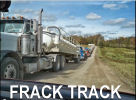 This song contains photos from protests in multiple US states as well as some from Europe. The footage is very impressive. Music is a great way to communicate, so send this round if you want to help resist the technology that is fracking democracy as well as razing entire landscapes. Fracking costs more than it is worth in terms of production as well, according to Bloomberg. See inside.
This song contains photos from protests in multiple US states as well as some from Europe. The footage is very impressive. Music is a great way to communicate, so send this round if you want to help resist the technology that is fracking democracy as well as razing entire landscapes. Fracking costs more than it is worth in terms of production as well, according to Bloomberg. See inside.
On 25 October 2013 in "EIA should provide data on cost of North American shale gas exploitation to make balanced reports," I asked EIA spokesman, Dr Fawsi, to tell me what the cost of production in fracking was. He said the EIA had the information but would not release it. However Bloomberg obtained the relevant information and published it in February under the headline: Bloomberg"Dream of US Oil independence slams against shale costs."
"Just a few of the roadblocks: Independent producers will spend $1.50 drilling this year for every dollar they get back." And, "Shale output drops faster than production from conventional methods. It will take 2,500 new wells a year just to sustain output of 1 million barrels a day in North Dakota's Bakken shale, according to the Paris-based International Energy Agency. Iraq could do the same with 60."
 After 10 years of negotiations, Russia's Gazprom and China's CNPC have finally signed an historic natural gas supply deal which will make them partners in post peak-oil industry for the forseeable future. Russia's relatively huge oil and gas reserves [1] have hardly been tapped due to financial depression following post USSR break-up and generally less wasteful exploration policies prior to this. Russia's future is buoyant, compared to the United States, where gas supplies are inadequate to meet the needs of domestic customers, oil peaked in the 1970s and fracking won't deliver anything like what it promised. In cooperation with China, Russia's position alongside China at the gateway to the Arctic, to the Caspian, and the Middle East put it in an remarkable new position.
After 10 years of negotiations, Russia's Gazprom and China's CNPC have finally signed an historic natural gas supply deal which will make them partners in post peak-oil industry for the forseeable future. Russia's relatively huge oil and gas reserves [1] have hardly been tapped due to financial depression following post USSR break-up and generally less wasteful exploration policies prior to this. Russia's future is buoyant, compared to the United States, where gas supplies are inadequate to meet the needs of domestic customers, oil peaked in the 1970s and fracking won't deliver anything like what it promised. In cooperation with China, Russia's position alongside China at the gateway to the Arctic, to the Caspian, and the Middle East put it in an remarkable new position. Russia, although it has known great hardship, has the benefited from this by being in touch with reality and knowing the value of good technological and scientific advice. Putin is highly intelligent and uses the media brilliantly, aiming at intellectuals who have become disgusted with the western mainstream media. He treats material in a complex and verifiable way, rather than relying on slogans and ideology. He has forged alliances all over the world with countries that the United States has alienated. Most of them have energy reserves of their own and want alternative markets.
Russia, although it has known great hardship, has the benefited from this by being in touch with reality and knowing the value of good technological and scientific advice. Putin is highly intelligent and uses the media brilliantly, aiming at intellectuals who have become disgusted with the western mainstream media. He treats material in a complex and verifiable way, rather than relying on slogans and ideology. He has forged alliances all over the world with countries that the United States has alienated. Most of them have energy reserves of their own and want alternative markets.
The US has been touting itself as a future supplier of gas to Europe in what Max Keiser and Stacy Herbert have called, "A hoax energy policy in america using phoney numbers." You wonder how the United States itself, let alone Europe, the UK and various sycophants like Australia could have fallen for this. Are the US and EU leaders the actual fraudsters? Max Keiser thinks that these leaders are simply too economically and technologically uneducated to see through the bankster spin.
On 25 October 2013 in "EIA should provide data on cost of North American shale gas exploitation to make balanced reports," I asked EIA spokesman, Dr Fawsi, to tell me what the cost of production in fracking was. He said the EIA had the information but would not release it. However Bloomberg obtained the relevant information and published it in February under the headline: Bloomberg"Dream of US Oil independence slams against shale costs."
"Just a few of the roadblocks: Independent producers will spend $1.50 drilling this year for every dollar they get back." And, "Shale output drops faster than production from conventional methods. It will take 2,500 new wells a year just to sustain output of 1 million barrels a day in North Dakota's Bakken shale, according to the Paris-based International Energy Agency. Iraq could do the same with 60."
The video linked to at the top of this article tells us how this works: Companies get finance for shale-oil/fracking schemes that cannot break even and then abandon the schemes and the financier and shareholders. They pocket all the financial fees from creating the debt and walk away from the ecological damage and the unrecoverable debt. Max Keisor aptly describes these actors as 'financial terrorists'.
Stacey Herbert asks Max Keiser, ""Who are these people that can spend a $1.50 to earn a dollar?"
Keiser replies, "Banks, which create the debt. It's like the old joke, you lose a dollar for every unit you sell, but you make up on the volume.""
It works the same way for big development schemes, which cannot make money for their investors for the same reason that fracking cannot, that is, because the real cost of materials and fuel have largely obliterated profit margins. We are in a post-cheap petroleum world where profits can only be puffed up by spin.
The East-West Link project which so many in Melbourne, Australia are protesting about, has been promoted with projections of fuel costs declining over the next ten years. You would not think that any competent government could believe such a scenario. Is it incompetence, ideology - or are our governments simply acting on behalf of the banksters when they force taxpayers to commit to massive structural engineering projects in the service of a ballooning population?
The Australian Government is proposing to get rid of two organisations: - the Australian Renewable Energy Agency and the Clean Energy Finance Corporation - that make money by investing in companies producing renewable energy products. They have rightly been criticised for this by Jenny Goldie, President of Sustainable Population Australia, who wrote on :
"There is no rational basis for this move, merely senseless ideology. Even if the government is so scientifically illiterate as to reject climate change, there is a need to shift to renewable energy in light of impending peaks of oil and gas." Jenny Goldie, The Age "Letters", 25 May 2014.
But, is it just ideology or it possible that the government actually believes that alternative energies represent a threat, as in competition, to their corporate friends who have invested in fossil fuels and nuclear? My understanding of flow energies and the finitude of uranium and untested nature of thorium supply and the commercial inviability of GenIV reactors leads me to believe that there is no competition with these fossil fuels, technologies and elements in terms of quantum of energy from flow energies.
Apart from not wanting to exacerbate climate change, the point of alternative/flow energies is that as fossil fuels become less and less available to people, they need alternatives to survive according to basic requirements.
Even so, those flow energies are not going to provide even the basics, if we do not allow population to decline.
Unfortunately the Australian government really seems to be taken in by economic dematerialisation spin on the one hand and by underestimates of likely draw-down on coal and other fossil fuels over the next fifty years as they are called upon to replace petroleum fuels. Our government - like the United States' - behaves as if gas is in endless supply and as if fracking will be an effortless bonanza. Perhaps this failure to carefully study the matter stems from the fact that Australians have not yet actually had to survive serious interruptions to fossil fuel supply... yet ... such as happened to European countries involved in WW1 and WW2, who take this prospect seriously. Australia's petroleum supplies have, however, more or less dried up. We are going to be relying on increasingly dirty fuels to supply power. We cannot afford to build anything like the quantity of nuclear power plants our population would require just to replace its current electricity consumption.[2]
As an Australian, I do not crow about this, but I could see it coming a long time ago. I know that the world could, in theory, survive energy decline if the power-elite would only allow populations to decline in size; if the unions and business would allow us all to start working (and therefore producing and consuming) half as much. Without constant growth in population, prices for resources and housing would not keep climbing. Quite quickly housing prices would drop. Energy resources and water would reduce more slowly, in line with population. We would not need to work so many hours, each of us, merely to pay rent or mortgages. We would have time to live and engage politically in communities which themselves would naturally relocalise, in view of adapting to declining energy reserves less supportive of daily commuting and longer journeys. [3]
[1] "Russia Reveals Official Data on Oil and Hydrocarbon Reserves For The First Time", Oil & gas Eurasia, July 12, 2013.
[2] Sheila Newman, "France and Australia after oil," Chapter 19, Sheila Newman, Ed., The Final Energy Crisis, 2nd Ed., Pluto Press, 2008.
[3] "Countering propaganda with simple solutions: Propaganda about a ‘dematerialised economy’ makes it hard to establish the reality that material industrial productivity is not actually less reliant on burning fossil fuels than it was in the 1970s, and that drawdown on fossil fuels has in fact been multiplied by the needs of much greater populations. Similarly the obvious still needs to be pointed out that increasing productivity means burning more fuel and outputting more pollution, accelerating petroleum depletion and adding more greenhouse gases. Not only do we not need all the goods we produce for consumption at home or abroad, we do not need the income they bring, and their acquisition is a poor compensation for lives given to industry. Wonderful jobs are few and far between. No-one wants to give those up. Some people also derive much of their social life from work but they would derive similar benefits, and perhaps more status and satisfaction, from other community activities. And plenty of people reach a stage of maturity where childlike obedience to workplace regimes in the cause of producing more and more widgets in different colours, or processing more and more customers a day, with unflinching subservience, challenges every natural instinct.
Instead of those complicated international agreements about percentile reductions in emissions over the years to come, which are hardly enforceable or even measurable, remaining mostly in the control of the corporate emitters, the solution lies much closer at hand, and could ultimately be controlled at grass-roots levels by the masses themselves. Relocalisation is obviously the best way to develop the solidarity and self-sufficiency to reorganize work.
Political commentator and climate activist, Clive Hamilton, writes in Growth Fetish,
Reduction in working hours is the core demand for the transition to post-growth society. Overwork not only propels overconsumption but is the cause of severe social dysfunction, with ramifications for physical and psychological health as well as family and community life. The natural solution to this is the redistribution of work, a process that could benefit both the unemployed and the overworked. (Hamilton, Clive, Growth Fetish, Allen & Unwin, Australia, 2003 and Pluto Press UK, 2005, last chapter, especially, pp.218-220)
He remarks that “Moves to limit overwork … directly confront the obsession with growth at all costs,” and talks about the liberation of workers “from the compulsion to earn more than they need.”
Because growth is sustained by a constant ‘barrage of marketing and advertising’ Hamilton wants advertising taxed and removed from the public domain, and television broadcast hours limited so as to “allow people to cultivate their relationships, especially with children.”
It should be obvious that the slower we work, the more fuel will remain, the less greenhouse gas will be emitted. If the populations which have ballooned to unimaginable proportions since the 1950s were allowed to return (through natural attrition) to more natural sizes by 2050, and the economy permitted to slow, it would take the heat off the planet and us as well. With so much less effort we could make such a positive difference to the planet and to our personal effectiveness." Original Source: Sheila Newman, Ed., "101 Views from Hubbert's Peak,"Chapter 1, The Final Energy Crisis, Pluto Press, UK, 2008


It is very important that all people understand that Shale Oil, like tar sands, demands far more energy (fuel) to extract than the old crude oil, as well as incurring appalling new democratic and environmental costs, notably to property rights and water conservation. The US and Australia have to be desperate to pursue this avenue, which has been banned in France (but US influenced forces in the EU are pushing to overthrow that ban). What you have is a situation where the US and other frackers are not giving out the increasing costs of oil recovery - in fuels, exploration, technology, and wars over hegemony in the Caspian and other regions. If they did, no-one would invest in shale-oil projects, or tollways. International energy agency reports are a public relations exercise on an issue too apparently specialised for most people to examine, but the principle is simple and it means that EastWest link business case is fundamentally flawed. Furthermore, so is the far more fundamental case for economic and population growth in Australia or elsewhere.

Anyone who watched the Beverly Hillbillies where the Clampett family danced around a gushing black oil geyser will know that crude oil used to be known as “Black Gold.” Unfortunately the days of crude oil gushing out of the earth are long gone. Now, much of what we assume is crude oil is no such thing. And that means that we also should not assume that frequent car use will continue indefinitely and that freeways and tollways are good investments or affordable.
Since the 1960s, and increasingly, crude oil has been supplemented by other fuels. Initially with lease condensates, lately with everything from vegetable oil to coal oil, shale oil and tarsands and grandma's old socks. This was predicted to happen by Walter Youngquist in Geodestinies and by many, many others from the early 1990s, but their message tends to date quickly due to it being very difficult to pinpoint the moment of 'oil peak' objectively.[1]
The thing that most people - economists and even engineers - cannot get their heads around is that graphs of world oil production, which provide the figures for the one featured here, do not publish a fuel cost for fuel recovered report (or, in thermodynamic terms which you may have heard, Energy Return On Energy Invested (EROEI).) This is like stating your profits before doing your costs. [Here is an article I wrote specifically re shale oil in the US about correspondence on this with an EIA energy specialist spokesman here EIA should provide data on cost of North American shale gas exploitation to make balanced reports. This article contains his revealing response.]
If the graphs did show costs, they would show that the number of equivalent barrels of oil used to get more oil has been climbing for ages and if you subtracted that increasing fuel expenditure you would show a decreasing fuel output. Part of the evidence for this lies in the changes to the definition of crude oil and petroleum, which show that world oil production statistics are made up of many new and costly oil sources. The attached graph is updated from Sheila Newman, Ed., The Final Energy Crisis, 2nd Ed, Pluto Books, UK, 2008 in Demography, Territory, Law, Rules of Animal and Human Populations, Countershock Press, 2013.

The attached graph, “World total oil per capita 1960-2011” shows the changes to the definition of crude oil and petroleum. I've also cut and pasted some paras from underneath. The source of this cited passage is Sheila Newman, Demography, Territory, Law, Rules of Animal and Human Populations, Countershock Press, 2013, p.43.
“Figure 3, ‘World total oil per capita 1960-2011’ suggests that, where once oil came from oil wells, now, to keep up with human population growth we supplement well-oil with all kinds of other stuff, whilst still presenting it as the same old stuff. If we still relied just on crude and lease condensates from oil fields, where trends are shown by the lowest and oldest line in the graph, we would be considerably poorer in total oil supply than we seem to be. Early definitions for total world oil (see EIA Crude and lease condensate from 1960-2011) only counted crude oil and lease condensate. Coinciding with the decline in easy oil availability as it became necessary to look harder and deeper for oil, the definition of oil started to include other sources obtained away from petroleum fields. The BP definition above counts crude oil, shale oil, oil sands and NGLs (the liquid content of natural gas where this is recovered separately). The EIA definition for Crude, condensate and most other liquids from 1970-2009 comprises natural gas plant liquids, and ‘other liquids’, defined as, “Biodiesel, ethanol, liquids produced from coal and oil shale, non-oil inputs to methyl tertiary butyl ether (MTBE), Orimulsion, and other hydrocarbons.” That’s a lot of new sources, all of them requiring more energy to extract than that required to harness the traditional ‘gusher’ close to the surface, now a rare phenomenon.
Highlighting the increasing cooption of non-crude oils and other processed and biological materials to ‘total oil’ makes the decline in crude and lease condensate more obvious, but the strange wavy plateau in the graph still gives the impression that we remain in control of our destinies. Some economists even believe [2] that we are still getting richer by producing more for less, that economic growth has become ‘dematerialised’ from fuels due to scientific efficiency. There was some truth to this shortly after the oil crash, but those gains are not as great as they are touted.
Another explanation is that, as prices for oil and other fossil fuels have risen, our efficiencies lie more in carefully choosing the kinds of fuels we use for different purposes, keeping oil only for the tasks that cannot be done well without it. For instance, where people once used oil to heat their homes, they now use coal-fired electricity or gas.[3]
We are told by politicians that flow energies like hydro, wave, solar and wind are contributing more and more to energy supply, but their contribution is small so far and can never match the vast reserves of fossil fuel that modern civilization is based on, because they cannot be stored in significant reserves and they tend to change on a daily basis and to be unpredictable. (That is not to say that these 'alternative' sources are not valuable. They just cannot support the vast populations and activities that fossil fuel supports. Most of these alternative sources are tried and true. Sun, water, tides and wind (along with beast) were solid bases for civilisation in Europe before coal and oil technologies. See Chapter 19: "France and Australia after oil" in S. Newman, Ed., The Final Energy Crisis, 2nd Edition, Pluto Press, 2008.)
The major alternative oil sources, however, that are really supplementing crude production are mostly pretty nasty, with a major symptom being clashes over democracy, even in the ‘developed’ world now. Farmers and communities are losing battles against corporations and their own governments over gas-fracking that threatens water supplies.[4] Farmers and climate change activists are outraged by coal-seam gas projects.
Mountaintops are being blown up to extract coal. [5] Tar-sand and shale-oil mining are last resorts that devastate land, use more fuel to extract, give less energy, and pollute atmosphere and water more than conventional sources. The world’s diminishing forests and their rare animal inhabitants are bulldozed to grow soybeans and other food crops to replace conventional crude and gas. Not really signs of increased ‘efficiency’.
Maybe this is really a bootstrap operation after all.
Although nuclear energy is important in electricity production in many countries, those countries got into nuclear at a time when there was plenty of capital. With some exceptions, like Iran (which encounters international political resistance) countries that do not already have it will have difficulty financing such massive new operations in global economies that keep faltering along with our crude oil supply. [6]
According to Figure 3, even with the addition of oil from these new, expensive, polluting and environmentally destructive sources, total global production of ‘oil’ is only just keeping up with population growth, if we take .012 barrels or so as the norm since 1982. Except – everyone doesn’t get their .012 barrels.
The cost of oil is increasingly unaffordable."
[1] And, of course, earlier and famously by King Hubbert of “Hubbert’s Peak”.
[2] See Maddison, A., “Evidence submitted to Select Committee on Economic Affairs,” House of Lords, London, for the Inquiry into “Aspects of the Economics of Climate Change,” http://www.ggdc.net/Maddison/, 20 Feb 2005, p.2. “Past Relation between World Economic Growth and Energy Consumption: (3) Tables 4a and 4b compare the growth of world population and GDP with energy use (in terms of both fossil fuels and biomass) from 1820 to 2001. The energy intensity of GDP rose until 1900 (to 0.42 tons of oil equivalent per $1000) and fell in the course of the twentieth century (to 0.27 tons per $1000 in 2001). Per capita energy use at the world level rose about eightfold from 1820 to 2001.” My comment on this is that, although the economist Angus Maddison saw that GDP growth was decreasing, he nonetheless anticipated a long period of rapid growth through the 21st century, if not so rapid as in the last century. But he based this on his perception of trends of ‘dematerialization’ of the economy, which he inferred from trends in quantities of calories of oil-equivalent used, and failed to account for differences in the nature of fuels and their suitability for different uses.
[3] Cleveland, C.J., Kaufmann, R.K. & Stern, D.I., “Aggregation and the Role of Energy in the Economy,” Ecological Economics, vol.32, issue 2, pp 301-17, also at http://www.bu.edu/cees/people/faculty/cutler/articles/Aggregation_role_of_energy.pdf., cited in Sheila Newman, 2008. Ed., The Final Energy Crisis, Pluto Press, UK, pp13-14. “[The authors ]test the ‘dematerialisation’ explanation of conventional economists for claims that economic growth is proceeding well with reduced growth in global oil-production.
Looking at the causal relationship between energy use and GDP from 1947 to 1996, they find, instead, that people and business have not used less fuel, but that they have been more careful about the fuels they choose to do different tasks, choosing cheaper fuels to do low production work and more expensive ones for high returns. Cleveland et al’s main indicator of quality is financial price and it seems to be an indicator which performs well in this case. The authors find that the financial cost of fuels is an accurate reflexion of their versatility or adaptability to specific tasks more than is measuring the total calories they embody. (Neither was any relationship found between the quality of ‘transformity’ (Odum) and the versatility of fuels for human social needs in industrial societies over the period examined. The authors illustrate this with the example of coal: “Users value coal based on its heat content, sulphur content, cost of transportation and other factors that form the complex set of attributes that determine its usefulness relative to other fuels.”)
Logistical or engineering factors affect the return on calories. Humans have adapted their social systems and technology to the limitations of fuels and fuel supply. If a fuel must be transported a long way, it makes less sense to use gas, since the cost rises over distance. To keep expensive pipe diameters low, natural gas, for example, needs to be compressed or cooled to LNG for transport through insulated pipes. (This is also a major reason why using hydrogen as an electricity carrier is so awkward.) You would do better by using a solid (like coal) or a liquid (like petroleum) in this circumstance. Whereas petroleum was once more widely used in North America for domestic heating, because it has a higher calorie content than coal, it now tends to be used for more economically productive work. Coal-fired electricity became a heating option, but now the price of coal is rising due to demand and the cost of transporting it to sprawling populations. Cleveland et al found that the more expensive the fuel in dollar terms, the more carefully it was used. The authors also found that, even where fuel was cheap to start with, its cost would increase in line with the financial return it provided to the users, so that their financial measure showed reliability over time.”
[4] Newman, Sheila, 2011, April 11, “Fracking democracy,”http://candobetter.net/node/2348. Comments on this article document evolution of laws in France to totally ban gas-fracking as environmentally and socially untenable.
[5] McQuaid, John, 2009, January. Mining the Mountains. Smithsonian Magazine, http://www.smithsonianmag.com/science-nature/Mining-the-Mountain.html#ixzz275C3YDUt
“Explosives and giant machines are destroying Appalachian peaks to obtain coal. In a tiny West Virginia town, residents and the industry fight over a mountain's fate.” “Demand for mountaintop coal has been rising quickly, driven by high oil prices, energy-intensive lifestyles in the United States and elsewhere and hungry economies in China and India. The price of central Appalachian coal has nearly tripled since 2006 (the long-term effect on coal pricing of the latest global economic downturn isn't yet known). U.S. coal exports increased by 19 percent in 2007 and were expected to go up by 43 percent in 2008. Virginia-based Massey Energy, responsible for many of Appalachia's mountaintop projects, recently announced plans to sell more coal to China. As demand increases, so does mountaintop removal, the most efficient and most profitable form of coal mining. In West Virginia, mountaintop removal and other kinds of surface mining (including highwall mining, in which machines demolish mountainsides but leave peaks intact) accounted for about 42 percent of all coal extracted in 2007, up from 31 percent a decade earlier. ”
[6] For a discussion about costs of building nuclear power supply in Australia from scratch see Newman, Sheila, 2008. “France and Australia,” in Sheila Newman (Ed.) The Final Energy Crisis, 2nd edition, pp251-252.
 In a recent legal settlement in Texas, a family was awarded $3 million after suffering health problems stemming from a fracking operation, which was not actually on their land. Apologies for having included in an earlier report, a video which did not give details. I have now replaced that video as well as providing news and links to other reports on this case.
In a recent legal settlement in Texas, a family was awarded $3 million after suffering health problems stemming from a fracking operation, which was not actually on their land. Apologies for having included in an earlier report, a video which did not give details. I have now replaced that video as well as providing news and links to other reports on this case.
"After a two-week trial that ended Tuesday -- Earth Day, coincidentally -- a Dallas jury awarded the Parr family $2.9 million for personal injury and property damages in the family's lawsuit against Plano-based Aruba Petroleum Inc.According to the lawsuit, Aruba Petroleum had 22 natural gas wells within a 2-mile radius of the Parrs' property, with three wells in close proximity to their Texas home. The closest was 791 feet away.
As a result of poor management and lack of emission controls, Aruba Petroleum created a "private nuisance" to the Parr family by producing harmful air pollution and exposing them to harmful emissions of volatile organic compounds, toxic air pollutants and diesel exhaust, the lawsuit said." Source: Jason Morris, "Texas family plagued with ailments gets $3M in 1st-of-its-kind fracking judgment", CNN, April 26, 2014
However, in the Jessica Ernst lawsuit:
"‘An Alberta government lawyer argued in court this week that Jessica Ernst’s lawsuit on hydraulic fracturing and groundwater contamination should be struck down on the grounds that it would open a floodgate of litigation against the province.
“There could be millions or billions of dollars worth of damages,” argued Crown counsel Neil Boyle.
Seven years ago, oil patch consultant Ernst sued Alberta Environment, the Energy Resources Conservation Board and Encana, one of Canada’s largest shale gas drillers, over the contamination of her well water and the failure of government authorities to properly investigate the contamination.’" Source: Andrew Nikiforuk, "Alberta Moves to Strike Down Ernst's Fracking Lawsuit: Landmark case could spark a flood of litigation against the province, lawyer argues." The Tyee, Ca.,, 18 Apr 2014.
Asking the right questions commented on the above article:
"Hats off again to Mr. Nikiforuk for continued coverage of this disturbing suit!! All Canadians should take notice of the bizarre defense positions that have been waddled out in this case over the past SEVEN years (Ms. Ernst must have incredible stamina - we should all thank her). When an industry can adopt a technology (in this case hydraulic fracturing) without due diligence or evidence of safety and efficacy AND when the "government" oversight body (Alberta Energy Regulator) is run by former industry executives what are citizens to do? Where are the BASIC protections for ordinary citizens? As Mr. Nikiforuk has reported in many other articles, this is the future that some provincial governments and the current Harper® regime lust after! Captive regulators, administrators and politicians without any concept of "conflict of interest" and legal immunity from civic harm (What do you mean your tap water is on fire!?). It is almost so comically bizarre as to be laughable ....except that this is an ongoing Alberta court case and not reality TV!! Please remember you do have a choice."
"Ohio geologists have found a probable connection between fracking and several mild earthquakes in a region that had never experienced a temblor until recently, according to a state report. The report, which coincided with Ohio’s announcement of some of the nation’s strictest limits on fracking near faults, marked the strongest link to date between nerve-rattling quakes and hydraulic fracturing — the process of firing water, sand and chemicals deep into the earth to extract oil and natural gas from ancient rock. Last month, the state indefinitely shut down Hilcorp Energy Co.’s fracking operation near the Pennsylvania border after five earthquakes, including one magnitude 3 temblor that shook many Ohioans awake.
Federal scientists have previously linked earthquakes in part to the use of injection wells, where post-fracking wastewater is forced back deep into the earth for storage. None of the seven wells near the Ohio quakes were used for waste disposal, leaving Ohio scientists to go a step further to find a significant relationship between the initial blast of fluid and the earthquakes shortly thereafter." Source:Paresh Dave, "Does fracking cause earthquakes?" McClatchy News, Governing.com, April 14, 2014
.
 "The East West Link is a white elephant that risks undermining Melbourne's productive capacity and living standards. The tunnel is not a solution. It does not provide value for money. Generations of Victorians will be burdened by an $8 billion debt for a tunnel that will have long passed its use-by date. It is regrettable that this government is seeking to amend the Infrastructure Australia legislation to give the minister heightened discretion rather than going through the proper independent, transparent processes that Australians expect when it comes to large spending on infrastructure projects." - Kelvin Thomson, MP. Wills.
"The East West Link is a white elephant that risks undermining Melbourne's productive capacity and living standards. The tunnel is not a solution. It does not provide value for money. Generations of Victorians will be burdened by an $8 billion debt for a tunnel that will have long passed its use-by date. It is regrettable that this government is seeking to amend the Infrastructure Australia legislation to give the minister heightened discretion rather than going through the proper independent, transparent processes that Australians expect when it comes to large spending on infrastructure projects." - Kelvin Thomson, MP. Wills. (All emphases and headings have been inserted by Candobetter.net's editors.)
(All emphases and headings have been inserted by Candobetter.net's editors.)
The Liberal government's biggest piece of land transport infrastructure is the proposed freeway through Royal Park in Melbourne, which it calls the East West Link. In fact, it does not link the east and west at all. Nor does it have the support of most Victorians, who know perfectly well that if it proceeds it will come with a massive opportunity cost and put paid to their hopes for a rail line to Doncaster, a rail line to Melbourne Airport, rail to Mernda or public transport to Monash University. In particular, it does not have the support of local residents, who are appalled by its impact on Royal Park, the Moonee Ponds Creek and the Melbourne Zoo. I commend Julianne Bell, the tireless secretary of Protectors of Public Lands Victoria and committee member of Royal Park Protection Group, and all the community groups who are working incredibly hard to stop this project happening: David Muir and theKensington Association, Kaye Oddie and the Friends of Moonee Ponds Creek, the Carlton Association and many others.
For a Liberal government that grandstands about fiscal rectitude, this $8 billion project is being put forward without passing any serious cost-benefit analysis. The government claims that the benefits of the $6 billion to $8 billion freeway outweigh the cost but refuses to provide details, claiming that this would compromise commercial negotiations.
The government's business case relies totally on the assumption of what economists call an 'agglomeration effect', in which population and economic clusters in cities lead to efficiencies and add to business productivity. The Linking Melbourne Authority, which provides information on road infrastructure projects conducted on behalf of the Victorian government, has referred to a book by the American writer, Edward L Glaeser, called Triumph of the City. Its main thesis is the agglomeration benefits that create cities. But the Linking Melbourne Authority does not appear to have read the book, because the book does not argue that freeways are the path to these benefits, in fact it argues quite the opposite. Mr Glaeser argues that 'driving creates negative externalities that hamper urban economies'. He warns against highway building, calling it 'antiurban'.
I quote:
“For decades we have tried to solve the problem of too many cars on too few lanes by building more roads, but each new highway or bridge then attracts more traffic.”
The Age commentator, Kenneth Davidson, has accurately pointed out in relation to the Royal Park freeway:
“It will cripple the state's fiscal position for many years through massive payments to the public-private partnership consortium that will finance it. The financial burden on the Victorian taxpayer will be so big that it will ''crowd out'' the state's core responsibilities for funding schools, hospitals, rail transport and even other roads for at least a generation.”
An email recently obtained through FOI illustrates that the Victorian government's own economic consultant, Chris Tehan of Evans & Peck, told the government that the business case had dramatically overestimated the wider economic benefits to get an artificial figure of a $1.40 return. According to The Age:
“… the methodology ‘has not been used in any of [the Transport Department's] other public transport projects or program modelling to date’”.
The financial case for the east-west link hinges on a prediction that toll road use will jump over the next 30 years because of rising wealth and shrinking petrol and CBD parking price rises.
The business case for the link makes the controversial assumption that: firstly, a driver's willingness to use toll roads will increase by 1.4 per cent per annum due to rising incomes; secondly, the rate of increase in the cost of running a car will fall from the current two per cent per annum in real terms to half a per cent per annum by 2041; and, thirdly, that the rate of increase in the cost of inner-city parking, which is currently increasing at four per cent per annum in real terms, will fall to 0.5 per cent by 2041.
The Victorian government has been caught out manipulating modelling to produce a favourable result.
As the minister at the table well knows, this is the Land Transport Infrastructure Amendment Bill 2014. The East West Link is this government's prime piece of proposed land transport infrastructure, and I am detailing to the House why I am opposed to this piece of land transport infrastructure.
The former Infrastructure Australia head, Michael Deegan, told a Senate committee that the government's unpublished business case provided an alternative estimate showing a benefit-cost ratio of just 0.8. Under this scenario, the project would return just 80 cents for every one dollar spent, suggesting an economic loss if the stock-standard analysis preferred by Infrastructure Australia is used.
According to The Age, in a submission to a federal infrastructure inquiry, Infrastructure Australia outed Victoria for failing to submit a robust business case for the East West Link, singling out:
“….the controversial $6 billion to $8 billion road as a key example of why the public are cynical about ‘big ticket’ infrastructure announcements.”
Infrastructure Australia's 11-member council, which includes the transport experts, Sir Rod Eddington, and the federal Treasury secretary, Martin Parkinson, is understood to broadly recommend only those projects with benefit-cost ratios of more than 1.5. And Michael Deegan warns that big-spending promises are being made without proper scrutiny. The Age quotes him as saying:
“This is a particular problem during election periods where commitments are often made although robust business cases have not been prepared, let alone independently reviewed.”
The Age continues, saying that Infrastructure Australia:
““… is particularly concerned about changes proposed by the Deputy Prime Minister, Warren Truss, which will give the federal government discretion to ring-fence some projects from independent scrutiny.”"
Mr Deegan warned that any such change would ‘exacerbate’ the problem of projects being presented to Infrastructure Australia ''with limited or questionable business cases.”
The freeway through Royal Park is a classic example of economic 'mutton dressed up as lamb'.
The article continues:
“Prime Minister Tony Abbott, who is opposed to Commonwealth funding for public transport projects, has pledged $1.5 billion for the east-west project, with the rest coming from the state government, which will collect toll revenue, and the private sector.”
According to the traffic expert, Stephen Pelosi, the traffic on the East-West Link in the morning peak is expected to have slowed to 20 to 30 kilometres per hour by 2031 as worsening congestion pushes the road close to capacity just 12 years after it is due to open. The East West Link is forecast to carry 80,000 vehicles a day on opening in 2019, increasing to between 100,000 and 120,000 a day by 2031 according to his modelling. He is quoted in The Age:
''If it's reaching 120,000 we're at a position where we're reaching capacity,'' Mr Pelosi said. ''Unless you intervene in some manner and manage the toll rate to influence demand, you get a situation where you're near capacity."
“
It is not much use to commuters.
When the Prime Minister is challenged about all the manufacturing jobs that are being lost in Melbourne with the impending closure of Ford, Holden and Toyota, and the job cuts at Qantas, he says, 'It will be alright, we are going to build the EastWest Link'. But will those construction jobs actually go to Australian workers – to Victorian workers, to Melbourne workers? In fact there are no guarantees – there are no guarantees! – that Australian workers will get the jobs created on the project from design through to actual construction work. This is because government policies at the federal and state level favour foreign companies and foreign workers over Australian workers and companies.
At the end of September 2013 there were 13,440 temporary foreign workers on 457 visas in the Australian construction industry, an increase of five per cent in just 12 months. At the end of January 2014 a total of 110,000 457 visa workers were in Australia, four per cent more than at the end of January 2013. The nature of the construction industry is such that any number of these 457 visa workers could be deployed to work on the Royal Park freeway, from engineering to trades like carpentry and other blue-collar jobs. The slowdown in resource sector construction means that many firms employing 457 construction workers are desperately looking for infrastructure projects to fill the gap in their orders.
On top of that, the Liberal government has shown that its agenda is to reduce protections for Australian workers and young people in the 457 visa program in the name of deregulation and removing what it calls 'unnecessary red tape'.
Let us consider exactly what the Liberal government considers unnecessary red tape. First, it has removed or watered down the key protections for Australian workers that Labor introduced in its June 2013 legislation, the Migration Amendment (Temporary Sponsored Visas) Act 2013, specifically, the labour market testing provisions. In November last year the coalition issued regulations under that legislation which make it much easier for employers to hire temporary foreign workers on 457 visas even when qualified Australian workers are readily available and willing to do the work. The figures from the Department of Immigration and Border Protection say that, for 65 per cent of all of the 457 visa nominations.
I am not the one who made the claim that the East West Link is a solution for the unemployed manufacturing workers in Melbourne; it was the Prime Minister who made that claim. I am pointing out why that claim is flawed.
Figures from the Department of Immigration and Border Protection indicate that, for 65 per cent of all 457 visa nominations, they have exempted employers from any legal obligation to labour market test – that is, to even look for Australian workers, let alone show that none were available, before 457 visas could be approved for temporary foreign workers. The Construction, Forestry, Mining and Energy Union, the CFMEU, pointed out in a recent submission to the Productivity Commission that, even in the minority of cases where 457 labour market testing is required, the protections for Australian workers looking for jobs on projects like the East West Tunnel are 'virtually non-existent'. They state:
“Employers have no obligation even to advertise jobs for which they nominate foreign nationals for 457 visas – ‘other recruitment efforts’ (unspecified) will suffice, according to FAQs on the Department’s website.
Job ads can be put on Facebook or buried on obscure company websites, for only a few minutes, then taken down. There is no minimum advertising time …”
The CFMEU propose there be a 28-day advertising period, and I agree with them. They also state:
“The so-called ‘job ads’ can be ‘placed’ any time in the last 12 months. This means employers can use job ads placed in February 2013 to justify their bid for 457 visa workers in February 2014 – regardless of the number of Australian workers who become available or unemployed in that time.”
Employers have no obligation to keep any records of the number of Australian applicants, the number who got jobs and those who didn’t, and the reasons why the Australian candidates missed out while temporary foreign workers did not.
Employers simply have to ‘declare’ this information to the Immigration Department and that’s the end of it. They have no obligation to prove they made good faith efforts to employ Australians first or keep records of any job interviews.
The government regards requirements like this as red tape holding back employers. I say that, without such requirements, a project like the East West Link, if it proceeds, will not employ many Victorian workers at all.
The East West Link is a white elephant that risks undermining Melbourne's productive capacity and living standards. The tunnel is not a solution. It does not provide value for money. Generations of Victorians will be burdened by an $8 billion debt for a tunnel that will have long passed its use-by date. It is regrettable that this government is seeking to amend the Infrastructure Australia legislation to give the minister heightened discretion rather than going through the proper independent, transparent processes that Australians expect when it comes to large spending on infrastructure projects.
Thursday 20th March 2014
The Hon Kelvin Thomson MP
Federal Labor Member for Wills
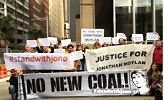 25 year old, coal-mine activist, Jonathan Moylan has made his first appearance in the Supreme Court of New South Wales today, where he entered a plea of not guilty. The ongoing case was moved from the Downing Centre Local Court to the Supreme Court on the request of the prosecution. Supporters stood out the front of court holding placards and banners showing their support for Jonathan and his actions. Mr Moylan was also supported by his parents, and his twin sister.
25 year old, coal-mine activist, Jonathan Moylan has made his first appearance in the Supreme Court of New South Wales today, where he entered a plea of not guilty. The ongoing case was moved from the Downing Centre Local Court to the Supreme Court on the request of the prosecution. Supporters stood out the front of court holding placards and banners showing their support for Jonathan and his actions. Mr Moylan was also supported by his parents, and his twin sister.Maules Creek local farmer Rick Laird, whose property is threatened by Whitehaven’s proposed mine, also attended court with Mr Moylan. The Laird family has owned property in the area for 150 years and are the namesake of the Leard State Forest, two thirds of which will be destroyed if the proposed mines in the area go ahead.
“We’ve been fighting these mines for years, and people are finally starting to hear about it. You’re only given limited ways to challenge mine proposals, and they get approved anyway, even if it means the end of a community. If these mines go ahead, its the end of our livelihoods. We won’t be able to farm the land and we worry about the impact of coal dust on our health,” said Mr Laird.
“The Maules Creek community stands with Jono,” said Mr Laird, out the front of the court house where a large contingent of people from the Gomeroi nation, also joined the vigil.
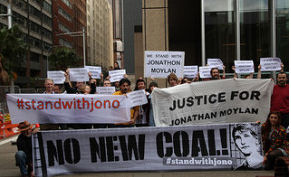
An international campaign has also been growing with Jonathan receiving support from prominent figures such as Noam Chomsky, Bill McKibben and David Suzuki. In recent days there has been coverage in several European papers.
“It is an honor to stand with Jono, to support him in his dedicated and courageous actions to defend all of us against the scourge of coal mining that is destroying the prospects for decent survival, and to protest, vigorously, the harsh sentence for actions that merit praise, respect, and thanks,” said Mr Chomsky.
David Suzuki has recorded a video message, which will be released in coming weeks and says, "Do I support Jonathan Moylan? You bet I do. He's a hero."
Author, environmentalist and founder of 350.org, Bill McKibben said, "Harshly punishing nonviolent action against the coal barons is not just spiteful and mean, it's stupid. Mr Moylan clearly speaks for the future."
In a campaign video that has been widely circulated high profile barrister Brian Walters SC stated, “Jonathan served ANZ shareholders by making them aware their resources are being used unethically."
In January this year, Mr Moylan sent a press release on ANZ letterhead to the ASX stating that the bank would withdraw financial support from Whitehaven’s Maules Creek open cut coal mine on ethical grounds.
Mr Moylan is being prosecuted by the Australian Securities and Investments Commission (ASIC) under section 1041E of the Corporations Act, pertaining to the making of false or misleading statements. He is the first individual to be charged under that section of the Act.
More background here and in the video released by the campaign. You can download a high resolution version here or view on the website: www.standwithjono.org
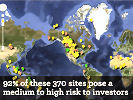 Report exposes risk to shareholders when indigenous rights are ignored. Are extractive companies operating on indigenous land overvalued? Indigenous Rights Risk Report.
Report exposes risk to shareholders when indigenous rights are ignored. Are extractive companies operating on indigenous land overvalued? Indigenous Rights Risk Report.
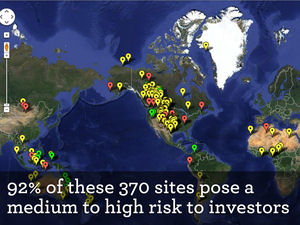 First Peoples Worldwide released its Indigenous Rights Risk Report at the The SRI Conference on Sustainable, Responsible, Impact Investing. The report analyzed 52 U.S.-based extractive companies listed on the Russell 1000® Index and assessed 370 oil, gas and mining sites located on or near Indigenous Peoples land. The results are eye opening. 92% of the sites posed a medium to high risk to shareholders. This is concerning given that only 5 of the 52 companies had an Indigenous Peoples policy for productively engaging Indigenous communities, leaving shareholders exposed to considerable risk. You can view the full report online at www.firstpeoples.org/indigenous-rights-risk-report.
First Peoples Worldwide released its Indigenous Rights Risk Report at the The SRI Conference on Sustainable, Responsible, Impact Investing. The report analyzed 52 U.S.-based extractive companies listed on the Russell 1000® Index and assessed 370 oil, gas and mining sites located on or near Indigenous Peoples land. The results are eye opening. 92% of the sites posed a medium to high risk to shareholders. This is concerning given that only 5 of the 52 companies had an Indigenous Peoples policy for productively engaging Indigenous communities, leaving shareholders exposed to considerable risk. You can view the full report online at www.firstpeoples.org/indigenous-rights-risk-report.
One of the companies First Peoples assessed was Southwestern Energy, which on October 6, 2013, a stock analysts said: “looks like a great long-term investment” and “it is a low political risk company.” Less than two weeks later, on October 17th, the Royal Canadian Mounted Police (RCMP) arrested about 40 Elsipogtog and Mi’kmaq First Nations tribal members and activists, using rubber bullets and pepper spray. The protestors had been blockading the road to SWN Resources Canada, a subsidiary of Southwestern Energy, since June. Southwestern Energy had requested "a permanent injunction to prevent protests against its bid to explore for gas," claiming the blockade was costing them $60,000 a day. However, the injunction was denied on October 22nd. There is no timetable for when the blockade and Southwestern Energy's losses will end.
Given this rosy stock forecast in the face of these troubling events, are traditional approaches to assessing the risk of oil, gas, and mining operations located on or near Indigenous Peoples land relevant anymore? First Peoples does not think so and has proposed a new risk assessment tool in its new Indigenous Rights Risk Report.
In the report, First Peoples rated the above-mentioned Southwestern Energy site a "High" risk. "Traditional financial analysis is no longer enough to predict the risk of an oil, gas or mineral site that is on or near Indigenous land," says Nick Pelosi, First Peoples' Corporate Engagement Associate. "The risk of not respecting Indigenous Peoples' rights must be considered for an accurate risk assessment."
Southwestern Energy is not alone. Nearly all of the companies in the study had a medium to high-risk profile. Of the companies that had over ten sites operating on or near Indigenous land (25 percent of our sample), 92 percent had at least one high-risk site and 23 percent had over five high-risk sites. Take into consideration that only 5 of those companies have an Indigenous Peoples policy, the vast majority of companies are flying blind when it comes to operating on Indigenous land, thus exposing their investors and shareholders to incredible risk.
The risk of not respecting Indigenous Peoples' rights is only going to increase. First Peoples president and co-founder Rebecca Adamson forecasts a confluence of events that will make the extraction of oil, gas and minerals from Indigenous land riskier in the future. She says, "First, Indigenous Peoples have more rights enshrined at the international and national level, and are exercising them more effectively than ever before. Second, as extractive industries search the globe for oil, gas and minerals, they are finding them increasingly on or near Indigenous land. And third, digital media is allowing Indigenous Peoples and their allies to access and share information more easily, giving them the ability to tell their story and conduct advocacy campaigns on a global scale that can directly impact the profitability and value of a company."
Therefore, it is more critical than ever for investors and shareholders to be able to access unbiased information about Indigenous Peoples and from Indigenous Peoples so they can make sound investment decisions. First Peoples hope this report will be a risk analysis tool for investors and shareholders as they make investment decisions in the extractive industry. Ideally, it will also act as a platform for Indigenous Peoples and investors to collaborate together on shareholder action campaigns that drive policy changes companies need to make to respect the rights of Indigenous Peoples and maximize shareholder returns.
View the full report online at http://www.firstpeoples.org/indigenous-rights-risk-report.
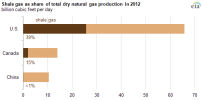 In a press release entitled, "North America leads the world in production of shale gas," the US Energy Information Administration (EIA) boasts long and loud that US gas quantities extracted by fracking shale beds vastly exceed production in Canada and China. Energy resources analysts, however, are critical that the EIA never releases balanced accounts on petroleum and gas production which would reveal the growing costs of extraction.
In a press release entitled, "North America leads the world in production of shale gas," the US Energy Information Administration (EIA) boasts long and loud that US gas quantities extracted by fracking shale beds vastly exceed production in Canada and China. Energy resources analysts, however, are critical that the EIA never releases balanced accounts on petroleum and gas production which would reveal the growing costs of extraction.These extraction costs include threats to human water supplies, which some believe could threaten civilisation and human survival in large US populations, including New York,[1] increasing fuel required to extract more fuel from more difficult places, massive earth subsidence and drastic landscape change, destruction of farmland, poisoning of soil, disturbance of pastoral and agricultural production and, most strikingly, destruction of democracy and property rights.[2] France has outlawed fracking for these reasons. [3]
I contacted Fawzi Aloulou, the specialist spokesman for the following EIA report with questions about this. I asked him, whether he had information about the amount of energy and the financial cost of extracting this natural gas from the shale? I put it to him that, as he would be aware, we have gone from an earlier situation where liquid petroleum gushed from the ground and gas was blown off into the atmosphere to one where great lengths have to be gone to to get an energy return on investment.
I wrote to him: "The EIA figures don't show the changes in the costs of extraction for crude and other liquids over time, nor for [fracking shale]." I added that candobetter.net would like to publish the EIA reported findings but we feel that they need more comment re the energy and financial cost side.
Dr Fawsi thanked me for my interest in the EIA's work but replied, "We don’t publish the financial cost of extracting natural gas from shale for a simple reason: cost keeps changing over time as function of depth of the shale, depletion rate and technology improvement."
To this I responded with, "Surely an annual report could average them out?"
Dr Fawsi replied, "That’s a good guess. However, our cost estimates are model-generated and we do not post them in public domain."
My further question as to where I might find an objective source on this major factor in energy production has so far received no answer. But I am interested to know that the EIA does model the problem. There is probably nothing more important to the American and global public likely to be affected by increasing environmental and social turmoil associated with trying to keep up petroleum-type resources to maintain economic growth in an era of dwindling traditional fuel source forms.
Below is Dr Fawsi's report. At this point in time no-one I know can say what the amount of gas produced would look like if these graphs also revealed and deducted the amount of gas and other resources that were used up to produce these apparently stunning surpluses. For more on these unmentioned factors have a look at our pages on fracking and coal-seam gas.
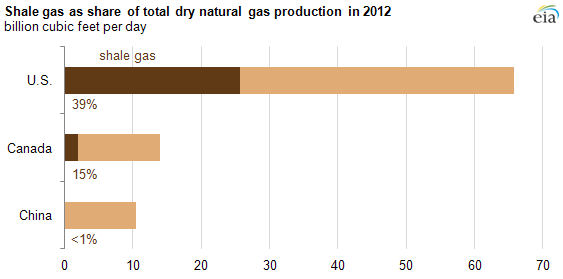
Source: U.S. Energy Information Administration, LCI Energy Insight, Canada National Energy Board, and Facts Global Energy
Note: Canadian data uses "marketable production," which is comparable to dry production.
The United States and Canada are the only major producers of commercially viable natural gas from shale formations in the world, even though about a dozen other countries have conducted exploratory test wells, according to a joint U.S. Energy Information Administration (EIA)/Advanced Resources International (ARI) study released in June. China is the only nation outside of North America that has registered commercially viable production of shale gas, although the volumes contribute less than 1% of the total natural gas production in that country. In comparison, shale gas as a share of total natural gas production in 2012 was 39% in the United States and 15% in Canada.
Shale gas dry production in the United States averaged 25.7 billion cubic feet per day (Bcf/d) in 2012, while total dry production averaged 65.7 Bcf/d. In Canada, total dry natural gas production from the two major shale plays—the Muskwa-Otter Park shale formation in the Horn River Basin of northern British Columbia and the adjacent Montney Basin that spreads over British Columbia and Alberta—averaged 2.0 Bcf/d in 2012, while total Canadian production averaged 14.0 Bcf/d. Gross withdrawals from Horn River and Montney averaged 2.5 Bcf/d in 2012, and reached 2.8 Bcf/d by May 2013. The potential for higher production from these two plays is currently constrained by limited pipeline infrastructure.

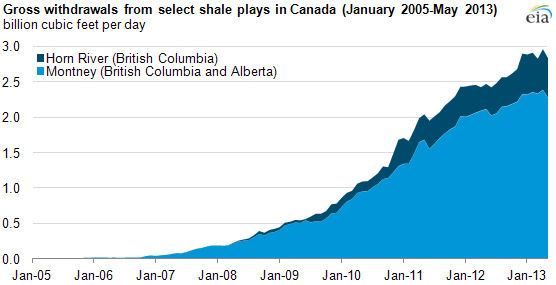
China was ranked as the largest holder of shale gas resources among the 41 countries assessed for technically recoverable shale resources in the study released by EIA/ARI this past June. The Chinese government has not officially reported on shale gas production, but some independent Chinese energy analysts have claimed commercial production of at least 0.003 Bcf/d of shale gas, mainly from the Sichuan Basin.
Map of China with EIA/ARI shale gas/oil assessment, as explained in the article text.
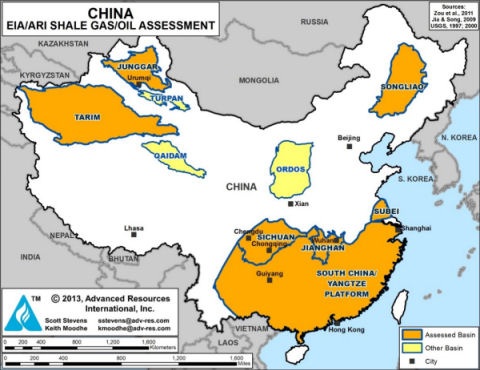
Principal contributor: Aloulou Fawzi
[1] "In Gaslands it has been suggested that, if completely developed, the huge Marcellus shale formation in the United states, under the current very poorly regulated, chaotically individual and uncoordinated system of drilling, could permit as many as 400,000 new wells. This might endanger the supply of water to New York, which would be catastrophic."
[2] Articles on social, vital and environmental costs of fracking
[3] Whilst official pronouncements try to normalise fracking as inevitable in the United States and Canada, the French experience highlights the coercive and outlandish application of this technology. More debate is needed and for debate, organisations like the EIA should release more information about these costs.
"France says "No" to fracking based on US experience
France has just passed its anti-fracking law in parliament. The law rescinds rights previously granted and puts any schale-mining for gas on hold pending new and safer technologies. Source: JT, Edition du Mercredi 13 Avril 2011, http://jt.france2.fr/20h/
This parliamentary decision is yet more evidence that the Napoleonic system in France and Europe is far more democratic - in protecting peoples' rights and communal (and national) assets and vital resources - than the anglophone systems in their various forms in Britain and her current and ex-colonies. America, Canada, Australia are among the least democratic countries in the world, with vast and growing differences between the haves and the have-nots, in legal systems which cannibalise and destroy their own community, citizens and resources. The reason that these countries are not yet obviously reduced to the poverty of Haiti is that their citizens started out with more resources per capita. As commonwealth is transferred more and more into private hands in those systems, people who have to date been able to survive, will not survive. The growing numbers of homeless and hopelessly endebted are indicators of the social unsustainability of the current economic and legal systems in Australia, America and Canada. In France and the rest of Europe, it is virtually impossible for citizens to be left without shelter unless they voluntarily opt out - as some homeless do - albeit with every attempt made to shelter them each winter.
High on the list of reasons against fracking in France was the risk of contamination of water supply and its impact on agriculture and human health." Source: First published as /?q=node/2348#comment-6275

Activist speaks to banner:
Source: http://en.wikipedia.org/wiki/Elsipogtog_First_Nation
In 2013, members of Elsipogtog First Nation demonstrated their concern over the proposed shale-gas project and 2D seismic imaging done near their reserve by SWN Resources Canada [7] a subsidiary of Southwestern Energy Company. Workers were on site to conduct seismic exploration that uses sound wave technology to create images underground shale beds that might contain natural gas. Many residents voiced their concerns about the planned hydraulic fracturing (fracking) through social media. Throughout the summer of 2013, protesters where blocking SWN Resources Canada workers from accessing their seismic equipment.
On July 24, 2013, a video was recorded of a First Nations protester strapping herself to bundles of Geophones and other equipment used by SWN Resources Canada for seismic testing on the site. She slowed down the workers access to the equipment until the RCMP removed her later that day.
On October 1, 2013, a video was recorded of Elsipogtog First Nation Chief Aaron James Sock delivering an eviction notice to SWN Resources Canadawhile dozens of protesters continued to block Route 134 in Rexton to prevent SWN Resources Canada from moving their exploration equipment.
On October 7, 2013, a video was recorded of Elsipogtog First Nation Chief Arren James Sock and Premier David Alward faced the media regarding the blockage of the shale gas research and the injunction regarding the blockade.
On Thursday October 17, 2013 a road block by shale-gas and fracking protesters "exploded in violence, sending dozens of people to jail and reducing five police cars to smouldering ruins". The RCMP said "more than 40 protesters were arrested for various offences including firearms offences, uttering threats, intimidation, mischief and for refusing to abide by a court injunction". T.J. Burke, the lawyer for the Elsipogtog First Nation, confirmed Chief Aaron Sock was among those arrested in the clash. "Chief Aaron Sock and a few of his band council members were released a few hours after their arrests".
(From the Argosy, Independent Student Newspaper, Mt. Allison)
by Kevin Levangie
October 9, 2013
Anti-fracking groups across New Brunswick have been converging on Rexton to voice their opposition to shale gas exploration in the area.
Recent protests directed toward gas company SWN Resources by the Elsipogtog First Nation just outside of Rexton, a small town in Kent County, have attracted support from a variety of groups, including members of the Tantramar Alliance Against Hydrofracking (TAAHF), as well as Mount Allison University students and professors.
The Elsipogtog First Nation issued an eviction notice to SWN Resources on October 2. In a statement to the media, captured on camera by CBC, Elsipogtog band chief Aaron Sock explained the reason for the eviction attempt. “Due to mismanagement by the province and exploitation by corporations, our reserve native lands and waters are being ravaged and ruined,” Sock said.
SWN ignored the band’s eviction notice. The provincial government currently controls the land, and has given SWN permission to explore for potential shale gas wells. Protestors set up a highway barricade, blocking access to and from a lot where company trucks have been parked. SWN filed a successful injunction to remove the protestors, which has not yet been enforced by the RCMP.
On Saturday October 5, TAAHF held a yard sale at 1 Rectory Lane in Sackville, named ‘Junk for the Injunction’, to raise funds for a legal injunction against fracking in the province. This yard sale complements the work they have been doing for over two years, appearing at the Sackville Farmers’ Market every Saturday to raise public awareness about fracking, and to raise funds.
The group behind the injunction, NB Water First, explain their goals on their website. “We are seeking what is called a quia timet injunction that indicates there is a future probability of injury to our rights and interests if unconventional shale gas drilling […] is pursued.” The group aims to raise $500,000 in order to launch their legal challenge, aiming for a moratorium on hydrofracking in New Brunswick.
Linda Dornan, who worked at the yard sale, explained that TAAHF is part of a broader movement. “We have twenty-nine groups across the province who have formed a coalition that includes the three communities of Mi’kmaq, Acadien, and English-speakers,” Dornan said.
Penny Mott, another TAAHF member at the yard sale, went to Rexton on October 4, and described the TAAHF’s activities as supportive. She said, “We sat with the native people; we talked; we supported them; we listened a great deal. It’s a very respectful, positive, slow moving conversation.”
Emma Jackson, a Mt. A student, also went to Rexton on October 4 with twelve other students and three professors. Jackson also emphasized the community and discussion-based nature of the gathering, describing the atmosphere as “welcoming” and “positive,” and, despite the tensions, similar to “a community picnic.”
While some TAAHF members were running the yard sale, others were staffing their display at the Sackville Farmers’ Market. Marilyn Lerch commented on the recently approved injunction: “One of the really shocking things is how quickly SWN was able to get an injunction to stop the protestors, when [activist groups have] been working for two years. You know they have deep pockets and will be fighting for a long time.”
- See more at: http://www.argosy.ca/article/local-activists-join-rexton-protest#sthash.o3v6vvBa.dpuf
 Really informative video inside, beautifully put together by trevorjbc, containing a variety of knowledgeable speakers in the field, and showing the landscape. Farmers and environmentalists don't want CSG mining, but the government is likely to face a backlash from the minerals sector unless it acts. Critics fear that fracking not only opens up cracks in the coal seam, but could also result in gas escaping into drinking water as it rises to the surface. It would be economically reckless and short-sighted for the supply of CSG to destroy valuable farmland, and compromise underground water supplies. There are fears from some landholders that the ban in Victoria will be lifted. (This article has been adapted from a comment).
Really informative video inside, beautifully put together by trevorjbc, containing a variety of knowledgeable speakers in the field, and showing the landscape. Farmers and environmentalists don't want CSG mining, but the government is likely to face a backlash from the minerals sector unless it acts. Critics fear that fracking not only opens up cracks in the coal seam, but could also result in gas escaping into drinking water as it rises to the surface. It would be economically reckless and short-sighted for the supply of CSG to destroy valuable farmland, and compromise underground water supplies. There are fears from some landholders that the ban in Victoria will be lifted. (This article has been adapted from a comment).Coal seam gas is a fossil fuel that is almost entirely made up of the greenhouse gas, methane. It's feared that large tracts of farmland will become unavailable for food production, forests and native bushland will be cleared and fragmented.
According to the industry, developing new supplies is absolutely critical if Australia wants to put downward pressure on energy prices. However, the gas industry want to drill more and more wells to meet their lucrative export contracts, and our prices will be linked with the much higher Asian market.
If it comes to a choice of harvesting underground coal seam gas, until it expires, or the long term integrity of our land, food and water supplies, then it would be counter-productive to prioritise the former over the latter.
The Pilliga is a vast expanse of bushland, located between Narrabri and Coonabarabran in western NSW. This iconic area of public land is under threat from the largest coal seam gas project ever proposed for New South Wales.
The Wilderness Society has been most concerned about the possible impact on the Pilliga forest and Channel Country region of Queensland's Cooper Basin. The government is prepared to relax environmental laws, or "green tape", for gas exploration.
Pilliga forest home to many threatened species, including the koala, Pilliga mouse, superb parrot and southeastern long-eared bat and regent honeyeater. A new ecological study of the Pilliga Forest in north-west NSW has found it is a “Noah's Ark” or refuge for many bird and mammal species that are declining across Australia.
Santos says it believes its CSG operations in the Pilliga can supply 25 per cent of the state's gas needs. More than 54% of Australia is covered by coal and gas licences or applications, and its clear that mining companies are riding roughshod over our governments and local communities. Dead animal bones in the bottom of a coal seam gas wastewater pond, according to the Stop Pilliga Coal Seam Gas movement,
The NSW government gave approval for the drilling in the woodlands in eastern Australia under stringent environmental conditions. The NSW government is hoping that a successful development by Santos of its coal-seam gas development in the Pilliga Forest in the northwest of the state will both satisfy some of the state's energy needs and demonstrate that coal-seam gas is not as environmentally harmful as its opponents claim.
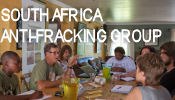 The Alliance against fracking in South Africa, AfriForum and Treasure the Karoo Action Group (TKAG), has said that shale gas exploration cannot proceed, following a statement by Trade and Industry Minister, Rob Davies, that Government could authorise shale gas exploration before next year's elections. See also other candobetter articles on fracking here: http://candobetter.net/?q=taxonomy/term/3020
The Alliance against fracking in South Africa, AfriForum and Treasure the Karoo Action Group (TKAG), has said that shale gas exploration cannot proceed, following a statement by Trade and Industry Minister, Rob Davies, that Government could authorise shale gas exploration before next year's elections. See also other candobetter articles on fracking here: http://candobetter.net/?q=taxonomy/term/3020
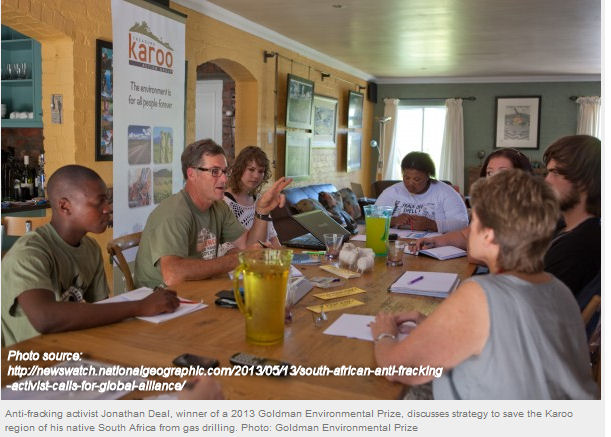
The Alliance states that is most disappointed by Government's stance on shale gas exploration.
"Firstly, we believe that such a decision will have an impact which will endure far beyond the election cycle of the Government. This decision cannot be rushed through before next year's election. It will be completely irresponsible," says Jonathan Deal, Chairperson of TKAG.
"Secondly, Minister Susan Shabangu has promised on various occasions to consult with the public of this country prior to making any decision on shale gas mining. This has not happened, and the people of South Africa - at all levels - are entitled to be heard on an issue of this magnitude."
"We are informed that Government has thus far relied largely on research commissioned by the Department of Minerals - which, in our considered view is singularly inadequate, considering the multidisciplinary nature of mining activity."
The environmental issues, of which water is only one, are complex and varied, and the laws of South Africa are wholly inadequate to control an industry with a severely tarnished reputation and the process of fracking, the Alliance believes.
"Government is selling votes with this move, but it is an empty promise. Even if Government issues the licences, exploration cannot legally proceed. We will not allow our constitutional rights to be breached; the Alliance will appeal against Government," says Julius Kleynhans, Head of Environmental Affairs at AfriForum.
"AfriForum and TKAG are most certainly pro-development, but we cannot endorse a hasty and ill-considered choice that may compromise the prosperity of current and future generations"
"Recent evidence from the United States of America indicated that fracking may contaminate drinking water. A study from Duke University analysed 141 drinking water samples across a gas-rich shale basin in north-eastern Pennsylvania."
"They found that methane concentrations were 6 times higher, ethane concentrations were 23 times higher and propane was detected in 10 samples, all of them from homes within a kilometre of the drilling sites."
Two previous studies by Duke scientists found direct evidence of methane contamination in water wells near shale-gas drilling sites in north-eastern Pennsylvania. The Alliance has said that it does not want this to occur in South Africa, especially not in the sensitive Karoo. It stressed that South Africa is an arid country and must be treated as such.
Hydraulic fracturing, known as fracking, has led to a massive expansion of natural gas production in the United States but has been banned in other countries such as France due to environmental concerns.
"The gas is extracted after cracking open hydrocarbon-rich shale by pumping water, sand and chemicals into the deep wells at high pressure. Environmental groups and many scientists believe this technique degrades the land, pollutes ground water and fouls the air," added Kleynhans.
Comment from Candobetter.net editor: Often overlooked as well, and most important of all, is that the energy required to extract fuels by fracking is much greater than in extraction of conventional oils, and must be subtracted from the total haul. The concept involved here is Energy returned on energy invested. This is a key concept for resource depletion and the wider community and the reporting community don't generally know of it.
The source of the above article was from a press release signed by:
Julius Kleynhans
Head: Environmental Affairs
AfriForum
Cell: 0027-82 829 9182
E-mail: [email protected]
Jonathan Deal
Chairman
Treasure the Karoo Action Group
Cell: 027-76 838 5150
Esmarie Prinsloo
Head: Media Liaison
AfriForum
Cell: 0027-72 332 9824
E-mail: [email protected]
 France has banned fracking, but the United States is allowing lateral mining to utterly demolish democracy and people are facing destitution and starvation because of the lack of citizen rights in the United States to protect farm and town water. Here are some quotes from the film: "Using our resources against us"... "Greed and money: they're just sucking all of the water out of the ground. Why can't I have a say? Why can't these oil companies understand?"..."We've got to have some restrictions on mining... "If we run out of water, we're going to have to pump it in and it will cost more than oil. So why do you think the people of this town should be quiet about it?" In the face of a winner takes all, some farmers are caving in and trading farming in for mining and selling off their water. "... If you've got to have the oil you have to use the water. The demand is out there." Australia's government is going the same way as the United States.
France has banned fracking, but the United States is allowing lateral mining to utterly demolish democracy and people are facing destitution and starvation because of the lack of citizen rights in the United States to protect farm and town water. Here are some quotes from the film: "Using our resources against us"... "Greed and money: they're just sucking all of the water out of the ground. Why can't I have a say? Why can't these oil companies understand?"..."We've got to have some restrictions on mining... "If we run out of water, we're going to have to pump it in and it will cost more than oil. So why do you think the people of this town should be quiet about it?" In the face of a winner takes all, some farmers are caving in and trading farming in for mining and selling off their water. "... If you've got to have the oil you have to use the water. The demand is out there." Australia's government is going the same way as the United States.
by Dr. Paul Craig Roberts
from Global Research, June 20, 2012 paulcraigroberts.org Headings inserted by Candobetter Ed.
 With her 1962 book, Silent Spring, Rachel Carson got DDT and other synthetic pesticides banned and saved bird life. Today it is humans who are directly threatened by technologies designed to extract the maximum profit at the lowest private cost and the maximum social cost from natural resources. Once abundant clean water has become a scarce resource. Yet, in the US ground water and surface water are being polluted and made unusable by mountain top removal mining, fracking and other such "new technologies. Ranchers in eastern Montana, for example, are being forced out of ranching by polluted water.
With her 1962 book, Silent Spring, Rachel Carson got DDT and other synthetic pesticides banned and saved bird life. Today it is humans who are directly threatened by technologies designed to extract the maximum profit at the lowest private cost and the maximum social cost from natural resources. Once abundant clean water has become a scarce resource. Yet, in the US ground water and surface water are being polluted and made unusable by mountain top removal mining, fracking and other such "new technologies. Ranchers in eastern Montana, for example, are being forced out of ranching by polluted water.
 http : / / www . youtube.com/watch?v=lZiAV6fU2NM&feature=player_embedded#!
http : / / www . youtube.com/watch?v=lZiAV6fU2NM&feature=player_embedded#!
Offshore oil drilling and chemical farming run-off have destroyed fisheries in the Gulf of Mexico. In other parts of the world, explosives used to maximize short-run fish catches have destroyed coral reefs that sustained fish life. http://aquatek- california.com/coral-reef-destruction/ Deforestation for short-run agricultural production results in replacing bio-diverse rain forests with barren land. The "now generation is leaving a resource scarce planet to future generations.
Nuclear power plants are thoughtlessly built in earthquake and tsunami zones. Spent fuel rods are stored within the plants, a practice that adds their destructive potential to a catastrophic accident or act of nature.
The newest threat comes from genetically modified seeds that produce crops resistant to herbicides. The active ingredient in Monsanto's Roundup herbicide is glyphosate, a toxic element that now contaminates groundwater in Spain and according to the US Geological Survey is now "commonly found in rain and streams in the Mississippi River Basin.
In 2011 Don Huber, a plant pathologist and soil microbiologist, wrote to the US Secretary of Agriculture about the unexpected consequences of GMOs and the accompanying herbicides. He cited adverse effects on critical micronutrients, soil fertility, and the nutritional value of foods. He cited the impairment of metabolic pathways that prevents plants from accumulating and storing minerals, such as iron, manganese, and zinc, minerals important for liver function and immune response in animals and people. He cited toxic effects on the microorganisms in the soil that have disrupted nature's balance and resulted in large increases in plant diseases. He cited livestock deaths from botulism, premature animal aging, and an increase in animal and human infertility.
In an interview, Huber said that the power of agri-business has made it almost impossible to do research on GMOs and that regulatory agencies with the responsibility of protecting the public are dependent on the industry's own self-serving studies and have no independent objective science on which to base a regulatory decision.
In short, in order to secure bumper crops for several years, we are destroying the fertility of soil, animal and human life.
Mankind has been destroying the world for a long time. In his fascinating book, 1493, Charles C. Mann describes the adverse effects on the environment, people, and civilizations of the globalism unleashed by Christopher Columbus. These include the international transfer of human and plant diseases, deforestation, destructions of peoples and empires, and the impact on distant China of Spanish new world silver.
Mann provides a history lesson in unintended and unexpected consequences resulting from the actions of elites and of those that elites dominated. The Chinese government fixed taxation in terms of the quantity of silver, but the importation of Spanish silver inflated prices (decreased the value of a given quantity of silver) and left the government without sufficient revenues.
A successor government or dynasty evicted Chinese from the coast in order to deprive pirates of resources. The displaced millions of people deforested mountainsides in order to sustain themselves with terrace agriculture. The result of deforestation was floods that not only washed away the terraces but also the crops in the fertile valleys below. Consequently, floods became one of China's greatest challenges to its food supply.
The first slaves were conquered new world natives, but the "Indians had no immunity to European diseases. The second wave of slaves were European whites, but the Europeans had no immunity to malaria and yellow fever. By default slavery fell to blacks, many of whom had immunity to malaria and yellow fever. Thus, a black workforce could survive the infected environments and newly created wetlands in which to raise sugarcane, wetlands that were ideal homes for malaria and yellow fever bearing mosquitoes. Mann, of course, is merely reporting, not justifying black or any slavery.
Mann points out that the lowly mosquito had a large impact on American history. The Mason-Dixon Line roughly splits the East Coast into two zones, the South in which disease carrying mosquitoes were an endemic threat, and the north in which malaria was not a threat. In the South, a person who survived childhood and grew into an adult had acquired immunity. Northerners had no such protection.
This had enormous consequences when Northern armies invaded the South. Mann reports that "disease killed twice as many Union troops as Confederate bullets or shells. Between the summers of 1863 and 1864, the official annual infection rate for what was called "intermittent fevers was 233 percent. The average northern soldier was felled more than twice. In one year 361,968 troops were infected. Most of the deaths from malaria were indirect. The disease so badly weakened the troops that they died from dysentery, measles or strep infection.
The mosquito was the South's most powerful ally and so prolonged the war, despite the vast numerical superiority of the Union force, that Lincoln was forced to take action that he opposed and declare emancipation of slaves. Thus, Mann writes, it is not farfetched to conclude that blacks were freed by the very malaria mosquito that had caused blacks to be the preferred workforce.
Mann shows that long before the birth of capitalism, greed drove men to barbarous treatment of their fellows. He also shows that policies, whether driven by greed or by well-intended socio-political design, inevitably had unexpected consequences. His multi-faceted history well illustrates the old adage, "the well laid plans of mice and men often go awry.
The old world's colonization of the new world devastated new world peoples, but the new world bit back with the spread of the potato blight to Europe and Spanish and European inflation.
Environmental destruction resulted mainly from deforestation and soils washed away by consequent floods. Prior to modern technology and toxic chemicals, the planet survived mankind.
Today the prospects for the planet are different. The human population is vast compared to earlier times, putting far more pressure on resources, and the disastrous consequences of new technologies are unknown at the time that they are employed, when the focus is on the expected benefits. Moreover, these costs are external to the business, corporation, or economic unit. The costs are inflicted on the environment and on other humans and other animal life. The costs are not included when the business calculates its profit and return on its investment. The external costs of fracking, mountain top removal mining, chemical farming, and GMOs could exceed the value of the marketable products.
Businesses have no incentive to take these costs into account, because to do so reduces their profits and could indicate that the full cost of production exceeds the value of the output. Governments have proven to be largely ineffective in controlling external costs, because of the ability of private interests to influence the decisions of government. Even if one country were to confront these costs, other countries would take advantage of the situation. Companies that externalize some of their costs can undersell companies that internalize all of the costs of their production. Thus, the planet can be destroyed by the short-term profit and convenience interests of one generation.
The main lesson that emerges from Mann's highly readable book is that people today have no better grasp of the consequences of their actions than superstitious and unscientific people centuries ago. Modern technological man is just as easily bamboozled by propaganda as ancient man was by superstition and ignorance.
If you doubt that the peoples of Western civilization live in an artificial reality created by propaganda, watch the documentary on psyops at  http : / / www . youtube.com/watch?v=lZiAV6fU2NM&feature=player_embedded#! The documentary does a good job despite wandering off into a couple of side issues on which it takes one-sided positions. It is a bit heavy on blaming the rich, and overlooks that Stalin, for example, had plenty of propaganda and wasn't looking to make himself a billionaire. Not all the rich are against the people. Billionaires Roger Milliken and Sir James Goldsmith fought against jobs offshoring and globalism, which increases the powerlessness of the people vis-a-vis the elites. Both spoke for the people to no avail.
http : / / www . youtube.com/watch?v=lZiAV6fU2NM&feature=player_embedded#! The documentary does a good job despite wandering off into a couple of side issues on which it takes one-sided positions. It is a bit heavy on blaming the rich, and overlooks that Stalin, for example, had plenty of propaganda and wasn't looking to make himself a billionaire. Not all the rich are against the people. Billionaires Roger Milliken and Sir James Goldsmith fought against jobs offshoring and globalism, which increases the powerlessness of the people vis-a-vis the elites. Both spoke for the people to no avail.
The documentary also blames the Constitution for limiting the participation of the mass of the people in governing themselves without acknowledging that the Constitution restricted the power of government and guaranteed civil liberty by making law a shield of the people instead of a weapon in the hands of the government. It is not the Constitution's fault, or the fault of Founding Father James Madison, that the American people succumbed to propaganda by Bush and Obama and gave up their civil liberty in order to be "safe from "Muslim terrorists."
The documentary shows that propaganda is a form of mind control, and controlled minds are indeed the American predicament.
In 1962 Rachel Carson caught Monsanto off guard and thus gained an audience. Today she would not get the same attention. Ready and waiting psyops would go into operation to discredit her. I just read an article by an economist who wrote that economists have decided that environmentalism is a religion, in other words, an unscientific belief system that preaches "religious values. This demonstrates what little importance economists attribute to external costs and the ability of externalized costs to destroy the productive power of the planet. Thus, the question, "silent spring for us? is not merely rhetorical. It is real.
Dr. Roberts' latest book is Economies in Collapse: The Failure of Globalism, published in Europe, June, 2012.
Paul Craig Roberts is a frequent contributor to Global Research. Global Research Articles by Paul Craig Roberts
 "Minister Burke has ruled out protection for all koalas and we are concerned these northwest NSW koala populations may be left off the threatened species list, even while their populations are falling dangerously low." Zoologist David Paull: 75 per cent decline in the relative abundance of koalas in the Pilliga from 1993 to 2011. Estimates only 500 to 2000 koalas left in the area. “The spread of mines and gas wells, tree kills from coal seam gas spills and increased vehicles through the Pilliga Forest will likely put extra strain on these already declining koala populations." Wilderness Society, 29 April 2012.(This article elevates to an article a comment "Media Release - The Wilderness Society on Koalas," posted by Bandicoot on April 29-2012.)
"Minister Burke has ruled out protection for all koalas and we are concerned these northwest NSW koala populations may be left off the threatened species list, even while their populations are falling dangerously low." Zoologist David Paull: 75 per cent decline in the relative abundance of koalas in the Pilliga from 1993 to 2011. Estimates only 500 to 2000 koalas left in the area. “The spread of mines and gas wells, tree kills from coal seam gas spills and increased vehicles through the Pilliga Forest will likely put extra strain on these already declining koala populations." Wilderness Society, 29 April 2012.(This article elevates to an article a comment "Media Release - The Wilderness Society on Koalas," posted by Bandicoot on April 29-2012.)

Koalas must be included on the national threatened species list as part of Environment Minister Tony Burke's 30 April announcement, especially in NSW’s Gunnedah region and the Pilliga Forest where they face the additional threat of expanding coal mining and coal seam gas operations, according to the Wilderness Society.
“Koalas need to be protected across Australia as they are rapidly declining in numbers, especially in the Pilliga Forest, where three- quarters of the population has been wiped since 2000,” Naomi Hogan of the Wilderness Society said today.
"Minister Burke has ruled out protection for all koalas and we are concerned these northwest NSW koala populations may be left off the threatened species list, even while their populations are falling dangerously low.
“Gunnedah is known as the ‘Koala Capital of the World’, yet recent scientific studies show koala numbers across the region and in the nearby Pilliga Forest are seriously declining.”
Zoologist David Paull has recorded a 75 per cent decline in the relative abundance of koalas in the Pilliga from 1993 to 2011. He said the population was relatively stable until 2000 and estimates there are only 500 to 2000 koalas left in the area.
“In 1993 I would take tours through the Pilliga and we would always see koalas, the river banks would be teeming with female koalas with babies on their backs,” said zoologist David Paull, an associate of the University of New England. “Now, you are lucky to see them.”
Miss Hogan continued: “These northwest NSW koala hotspots are the target of very rapid and aggressive coal seam gas and coal mining expansion. The Pilliga Forest is covered by a proposal for the largest coal seam gas field in NSW, while the Liverpool Plains are threatened
by coal seam gas pilot wells at Spring Ridge and Marys Mount. Koalas in Leard State Forest are facing three enormous open-cut coal mines.
“The spread of mines and gas wells, tree kills from coal seam gas spills and increased vehicles through the Pilliga Forest will likely put extra strain on these already declining koala populations.
“The 2011 Senate Inquiry into koalas recognised the major threats to Koalas are habitat degradation, vehicle strikes and fire – all of which are likely to increase in the Pilliga Forest, Liverpool Plains and Gunnedah areas if coal seam gas mining proceeds.
“Koalas are an Australian icon that deserves Federal protection.” Contact Naomi Hogan, The Wilderness Society Newcastle: 0401 650 411
David Paull, Zoologist in the Pilliga Forest: 0424 252 244
Prue Bodsworth, The Wilderness Society Newcastle: 0427 417 870
PS: Tony Burke wants to exclude the latest modern threat to koala's from an overall protective status, yet they are a national, world-wide recognizable native animal? The Koala Capital's exclusion for coal seam mining would make mockery of any threatened status!
Partial Source: Media Release -The Wilderness Society on Koalas
On April 29th, 2012
Three-quarter of Koala population wiped out
 Gas-frackers now sponsoring Sierra Club?! Thanks to decades of aggressive misinformation and the deliberate air-brushing of politically incorrect facts about their founding fathers, the leadership of the Sierra Club and its green clones in the environmental establishment have built up a membership steeped in ignorance about the initial aims and concerns of the movement. But ignorance is no excuse for the lack of ethical standards. Environmentalists have a duty to perform due diligence and find out if their favourite green organization is on the corporate take, ask demanding questions and do their own research.
Gas-frackers now sponsoring Sierra Club?! Thanks to decades of aggressive misinformation and the deliberate air-brushing of politically incorrect facts about their founding fathers, the leadership of the Sierra Club and its green clones in the environmental establishment have built up a membership steeped in ignorance about the initial aims and concerns of the movement. But ignorance is no excuse for the lack of ethical standards. Environmentalists have a duty to perform due diligence and find out if their favourite green organization is on the corporate take, ask demanding questions and do their own research.

Jan Lundberg, an independent oil industry analyst and eco-activist of notoriety, recently revealed that the Sierra Club, America’s flagship environmental organization, accepted $26 million in donations from Chesapeake Energy, the natural gas fracker. Shocking? It shouldn't be---if you read Sierra Club history--north or south of the 49th parallel. But who in this corrupt, money-grubbing corporate lackey of an organization reads it? I mean----how is this for a measure of ignorance----on the 22nd of this month, the Sierra Club in my locality will be marking "Earth Day", but you would be lucky to find a single Sierran who can tell you who founded Earth Day and why! Imagine if people who call themselves "Christian" celebrated Easter last weekend but never heard of Jesus Christ or understood the significance of the Easter Sunday resurrection?
Sierrans, like most environmentalists here and elsewhere apparently don't know that it was Democratic Wisconsin Senator Gaylord Nelson who founded Earth Day and that his major focus was the threat posed by immigration-driven population growth in the United States and by global overpopulation.They don't know because their corporate-friendly, soft green-left, open-borders leadership ain't gonna tell them---and it is guaranteed that they aren't ever going to do their own research. It is much easier to be spoon-fed with a constant diet of filtered misinformation from The Club and join the herd in a sociable beach cleanup. Hey, they provide refreshments don't they? The beach clean-up organized by the Toronto Dominion Bank is fun too---and so are the volunteer events sponsored by the Moonies, I understand. And why not lend support to the Hell's Angels' Christmas toy drive in Vancouver?"
There is a reason, of course, why the Sierra Club doesn't celebrate the memory of Gaylord Nelson on Earth Day. It is the same reason why La Raza---a group that shamelessly lobbies for the dominance of the Hispanic “race”, won't tell the truth about Caesar Chavez, or Canada’s New Democratic Party won't tell their membership about Tommy Douglas' Master's Thesis or J.S. Woodsworth's position on immigration. It's not politically correct. In fact---its damn-right embarrassing to the modern crop of liars and manipulators who lead the 'progressive' coalition.
The truth is that Caesar Chavez, the celebrated Latino civil rights and union activist for whom streets, parks and three holidays are named, stood on the Mexican border to protest against the importation of illegal strike breakers. He realized that mass immigration was a bad deal for Mexican Americans----just as Canadian socialist icon J.S. Woodsworth was resolutely opposed to immigration during tough economic times because he understood that the best friend the working man ever has is a tight labour market. And Tommy Douglas----who formed the first socialist government in North America---supported eugenics in 1933 because he realized that when poor people had large families, poverty was passed on from one generation to another because the children were condemned to poor nutrition, poor health, and poor education. He cared too much about the poor to see them self-destruct from over-breeding. Martin Luther King Jr. felt much the same way.
So what did Senator Gaylord Nelson believe? Try this:
On Earth Day's 30th anniversary in 2000, Nelson said : "Population, global warming and sustainability would be my suggestions for the three most urgent environmental challenges.... Stabilizing U.S. population is a challenge that could be resolved in a relatively short period resulting in significant economic and environmental benefits. At the current rate of population growth, the population of the US will (rise)... to some 530 million within the next 65 to 70 years. If that happens the negative consequences will be substantial if not, indeed, disastrous. To stabilize our population would require a dramatic reduction in our immigration rate....
"The hard fact is that while the population is booming here and round the world, the resource base that sustains the economy is rapidly dwindling. It is not just a problem in faraway lands, it is an urgent, indeed, a critical problem here at home right now. We are talking about deforestation, aquifer depletion, air pollution, water pollution, and depletion of fisheries, urbanization of farmland, soil erosion and much more...
"The bigger the population gets, the more serious the problems become.... We have to address the population issue. The United Nations, with the US supporting it, took the position in Cairo in 1994 that every country was responsible for stabilizing its own population. It can be done. But in this country, it's phony to say 'I'm for the environment but not for limiting immigration." http://applythebrakes.com/leader_detail.asp?id=10
So the question is, how can anyone with any ethical sense be associated with an organization like the Sierra Club---or with any of its 'local' manifestations? Are those followers who choose "not to know" about the man who founded Earth Day and why he did so to be exempted from any responsibility for supporting this corporate-front group oblivious to the very threat he worried most about? If a Nuremburg Trial was held to establish culpability for the Sixth Extinction event, would willful ignorance be a plausible defence? I don't think so.
Tim Murray
April 19, 2012
 Feb. 6, 2012 - Last Wednesday, Oscar-nominated filmmaker Josh Fox was arrested after refusing requests from Republican committee members to leave a hearing on hydraulic fracturing, or "fracking." The hearing focused on a recent EPA report that suggested that hydraulic fracturing methods of extracting natural gas most likely caused contamination of drinking water in Wyoming.
Feb. 6, 2012 - Last Wednesday, Oscar-nominated filmmaker Josh Fox was arrested after refusing requests from Republican committee members to leave a hearing on hydraulic fracturing, or "fracking." The hearing focused on a recent EPA report that suggested that hydraulic fracturing methods of extracting natural gas most likely caused contamination of drinking water in Wyoming.
The filmmaker, a noted critic of hydraulic fracturing, was removed after Republican members of the
Energy and Environment Subcommittee of the House Science, Space, and Technology Committee asked his camera crew to leave the hearing because they were not accredited. Mr. Fox refused to leave and was arrested for "unlawful entry." The hearing continued despite the excitement, with Republicans questioning the scientific rigor of the report and Democrats and EPA official Jim Martin defending it.
The process of hydraulic fracturing has been heavily criticized by environmental groups because of its potential to contaminate drinking water, while representatives of the natural gas industry have repeatedly claimed that it is safe.
MapLight has conducted an analysis of campaign contributions to members of the House Science Subcommittee on Energy and Environment from interest groups representing Oil & Gas,
Natural gas transmission & distribution, Major (multinational) oil & gas producers and Independent oil & gas producers as well as Environmental policy and Alternative energy production & services.
METHODOLOGY: Includes reported contributions to congressional campaigns of Members of the House Science Subcommittee on Energy and Environment, including Ex Officio members, in office during the 112th U.S. Congress, from
Oil & gas, Natural gas transmission & distribution, Major (multinational) oil & gas producers, Independent oil & gas producers, Environmental policy and Alternative energy production & services interest groups selected by MapLight, July 1, 2009 - June 30, 2011. Contributions data source:
OpenSecrets.org.
A link to this data release can be found
here.
MapLight is a nonprofit, nonpartisan research organization that reveals money's influence on politics.
Media Contact:
Pamela Heisey
c: 415-299-0898 | w: 510-868-0894 | e:
 The way The Australian writes him up, Tim Flannery, who once wrote so articulately in defense of our land and its ecology and our place in it, now seems reduced to a quasi-apologist for extreme mining technologies. The Australian writes in such an unbalanced way. See also "Fracking Democracy..."
The way The Australian writes him up, Tim Flannery, who once wrote so articulately in defense of our land and its ecology and our place in it, now seems reduced to a quasi-apologist for extreme mining technologies. The Australian writes in such an unbalanced way. See also "Fracking Democracy..."
"Tim Flannery backs coal-seam gas and mining industry" by Amos Aikman, The Australian, October 25, 2011
The article reads as if Tim Flannery, (famously author of The Future Eaters), alarmed at the roughshod being run over Australian farmers' rights and the environment, is trying to get higher standards in the mining industry.
He is reported to have said that, "similar arguments applied to mining generally, and called on government and industry to do more to regulate and rein in poor performers."
The Australian cites him as saying that mining is utterly necessary for modern life.
It fails to balance its argument by giving the case for allowing population to downsize and relocalise and for people to be more self-sufficient in a slower economy to allow the planet time to heal. No attention is given to how we all work harder for less and how many of us don't see the point in producing all this short-lived 'stuff' that finishes up in land-fills. Yet it is only in order to continue producing all this stuff that extreme technologies like gas-fracking can be artificially politically justified. In the end the only reason to go on producing more and more stuff is to keep a few undeserving greedy people at the top in the positions to which they have become accustomed.
Here is the comment I sent to the Australian regarding their article:
"France recently passed a law in parliament to make fracking illegal. The law rescinds rights previously granted and put any schale-mining for gas on hold pending new and safer technologies. Source: JT, Edition du Mercredi 13 Avril 2011, http://jt.france2.fr/20h/ Since then a further report was released and covered on the news for France 2, Monday 3 October 2011, which said that the French Government remained unconvinced by the latest techniques proposed by fracking concerns. All permits have been cancelled. High on the list of reasons against fracking in France was the risk of contamination of water supply and its impact on agriculture and human health.
This parliamentary decision is yet more evidence for those aware of different legal systems, that the Napoleonic system in France and Europe is far more democratic - in protecting peoples' rights and communal (and national) assets and vital resources - than the anglophone systems in their various forms in Britain and her current and ex-colonies."
Let's see if they publish that.
Generally, it seems that, if you want to have your opinion published in the mainstream press you may only express it in so far as it fits their paradigm. So Tim Flannery, who once wrote so articulately in defense of our land and its ecology and our place in it, now appears to be reduced to being portrayed as a quasi-apologist for extreme mining technologies. It is hard to believe that he is really behind gas-fracking. One gets the impression that he is now interfacing, on behalf of numerous committees, with a monolithic industrial mining front that speaks uniquely in Murdochian.
It is as if our press and government have rendered us incapable of imagining any other way. France's parliamentary decision to ban gas-fracking is yet more evidence that the Napoleonic system in France and Europe is far more democratic - in protecting peoples' rights and communal (and national) assets and vital resources - than the anglophone systems in their various forms in Britain and her current and ex-colonies.
Australia's lack of information and news from Western Continental Europe keeps us in the dark about other ways other possibilities, and notably enduring forms of democracy that retain local powers. We only get an Anglophone perspective on matters of importance. America, Canada, Australia are among the least democratic countries in the world, with vast and growing differences between the haves and the have-nots, in legal systems which cannibalise and destroy their own community, citizens and resources. The reason that these countries are not yet obviously reduced to the poverty of Haiti is that their citizens started out with more resources per capita. As commonwealth is transferred more and more into private hands in those systems, people who have to date been able to survive, will not survive. The growing numbers of homeless and hopelessly endebted are indicators of the social unsustainability of the current economic and legal systems in Australia, America and Canada. In France and the rest of Europe, it is virtually impossible for citizens to be left without shelter unless they voluntarily opt out - as some homeless do - albeit with every attempt made to shelter them each winter.
That this same system was able to appraise and legislate against a threat to its peoples' way of life in response to their protests is an indication that their system is more democratic and more flexible than ours.
 Aussies take action! Lock the gate!" Australians to gather in Brisbane to defend water and land from coal and coal-seam gas fracking, which has already been totally banned in France. (See comments.) On Sunday October 16, 11a.m. Queens Park Cnr George & Elizabeth Sts. Brisbane City. lockthegateqld[AT]gmail.com Facebook: Defend Our Water Qld Tel. 0404 677 781 www.lockthegate.org.au
Aussies take action! Lock the gate!" Australians to gather in Brisbane to defend water and land from coal and coal-seam gas fracking, which has already been totally banned in France. (See comments.) On Sunday October 16, 11a.m. Queens Park Cnr George & Elizabeth Sts. Brisbane City. lockthegateqld[AT]gmail.com Facebook: Defend Our Water Qld Tel. 0404 677 781 www.lockthegate.org.au
For more information about gas-fracking, see "Fracking democracy - Gaslands- the movie, the industry and national responses." France completely banned all fracking a few months ago and last week it revoked licences given to some companies which tried to demonstrate a new, safer method. The French Government said that there is no safe method of fracking. It is environmentally destructive, socially destructive and dangerous to water catchments.
Aussies take action! Lock the gate! Defend our water from coal and coal seam gas!
Coal Seam Gas and Coal represent the biggest threat to our precious underground water reserves in our history. On Sunday October 16, join with communities across the country to demand a moratorium until the full social and environmental impacts are known. Gather 11a.m. Queens Park, Cnr George & Elizabeth Sts., Brisbane City. 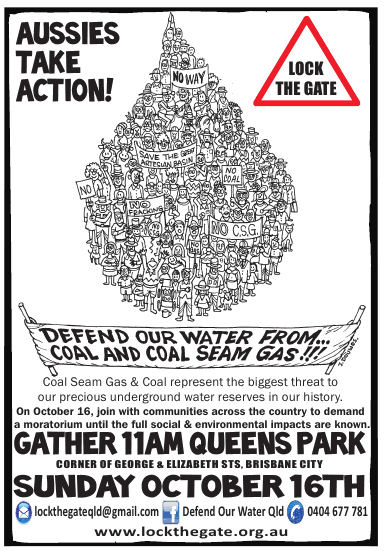
E-mail lockthegateqld[AT]gmail.com
Facebook: Defend Our Water Qld,
Tel. 0404 677 781
www.lockthegate.org.au
 France is about to debate a law to totally ban fracking for gas. Australia has allowed the practice with problems quickly developing. Mexico has no defenses. The United States is deeply affected. "Fracking" was developed by Halliburton, the second largest oilfield services corporation in the world. The term comes from the extraction method of hydraulic fracturing of shale beds to access "unconventional gas" i.e. gas that comes out of wells other than classic oil-wells. Under President Bush, the fracking industry was exempted from environmental laws, including clean water protection. As many of us have come to understand, when you take away environmental protection, you take away almost all human rights to object to big business, even if citizens lives are obviously threatened. We also mention the Australian film made by Four Corners investigating the impacts of the industry in Australia.
France is about to debate a law to totally ban fracking for gas. Australia has allowed the practice with problems quickly developing. Mexico has no defenses. The United States is deeply affected. "Fracking" was developed by Halliburton, the second largest oilfield services corporation in the world. The term comes from the extraction method of hydraulic fracturing of shale beds to access "unconventional gas" i.e. gas that comes out of wells other than classic oil-wells. Under President Bush, the fracking industry was exempted from environmental laws, including clean water protection. As many of us have come to understand, when you take away environmental protection, you take away almost all human rights to object to big business, even if citizens lives are obviously threatened. We also mention the Australian film made by Four Corners investigating the impacts of the industry in Australia. 
France is about to debate a law to totally ban fracking for gas. Australia has allowed the practice with problems quickly developing. Mexico has no defenses. The United States is deeply affected. "Fracking" was developed by Halliburton, the second largest oilfield services corporation in the world. The term comes from the extraction method of hydraulic fracturing of shale beds to access "unconventional gas" i.e. gas that comes out of wells other than classic oil-wells. Under President Bush, the fracking industry was exempted from environmental laws, including clean water protection. As many of us have come to understand, when you take away environmental protection, you take away almost all human rights to object to big business, even if citizens lives and livelihoods, notably through their clean water supply, are obviously threatened. We also mention the Australian film made by Four Corners investigating the impacts of the industry in Australia.


Years ago I spent a couple of months travelling between Colorado and White Sulphur Springs, Montana, in the US with a friend in the petroleum business, who looking into purchasing mineral rights on behalf of some organisations. It was the middle of winter and a blizzard accompanied us the whole way. Our vehicle, an old Lincoln Continental, developed defective wiring so the heaters and de-misters didn't work and the windows wouldn't wind down. As we left Cheyanne, Wyoming, we were wearing ski outfits and using an icescraper on the inside of the windows, wondering just how long we could survive this. When we got to the town of White Sulphur Springs, the main street looked like a bob-sleigh course. The town lacked the money to clear the ice and the only warm place, as I recollect, was under the motel, in a glaucous grotto whence issued the sulphurous springs which apparently gave the town its name.
From this picture I found on the internet, I see that it hasn't changed all that much, except that they are now fracking for gas in Montana.
Why should I mention this?
Well, perhaps to give you an idea of how cold it gets in North America in winter, and just what film-activists like Josh Fox are up against from the general public as well as those who live in warm climates and own shares in gas exploration. Further down we mention the Australian investigation of this industry on Four Corners: See "The Gas Rush," 21 February 2011.
Candobetter.net is a website for reform in democracy, environment, population, land use planning and energy policy. These topics go together naturally, but few single productions bring them together as effectively as Gaslands, a movie made and lived by Josh Fox (no relation to Fox-news, of course!)
Watch this movie and, if you still believe in benign government and that capitalism is the same thing as democracy, please write up your case to amaze us here.
It is really hard to do a review of Gaslands, because even if it were a terrible production, the material raises it to magnificent and frightening heights. The maker of this movie, Josh Fox, was offered a paltry $100,000 for the woods and fields he has lived in all his life, in exchange for mineral exploration rights.
He loved his landscape, which he had grown up with, and he had heard some rumours that fracking sometimes went wrong and cracked water table rock layers, releasing into the water, as well as natural gas and other petroleum by-products, some heavy-duty chemicals used to make water more slippery.
Here is an mp3 about Fracking Fracking: Implications for Human and Environmental Health, Nov 9, 2010 More information here.
Energy in Depth, "Debunking Gasland," is an industry group site containing a response to the movie, Gaslands.
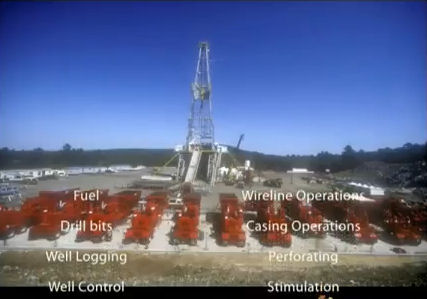 Click here to see a movie which the industry has made in response to the film. The pro-fracking campaign is just as fear-driven as the anti-gas fracking campaign.
Click here to see a movie which the industry has made in response to the film. The pro-fracking campaign is just as fear-driven as the anti-gas fracking campaign.
Unfortunately the industry insists, oilily, that if we want our lifestyles to continue, we have to find more and more fuel to allow our economies to continue to grow. "The world's dependency on oil and gas is a given. Without these fuels, life as we know it, would grind to a stop. " They show a snowbound house with cheery lighted windows, a masked medical team at a patient's bed, a plane taking off, and traffic-laden highways. There is no acknowledgement of the benefits of simplicity, the wholesomeness of nature, the disbenefits of consumerism and growth, or the impact on democracy of capitalism gone mad. This film, however, has a nice animated model of how to drill a well and what fracking entails. The model idealises and simplifies the situation, but it educates on the engineering.
The page associated with this movie is called "Debunking Gasland" and comes from a chapter entitled, "The Energy you need, the Facts you demand." Under, "Who we are," you can read that,
America’s natural gas and oil producers – the majority of which are small, independent businesses with less than 12 employees- are committed to strengthening America through the safe, responsible and environmentally-friendly development of domestic energy resources. Together, we’re working to keep energy affordable here at home, creating new jobs and minimizing our dangerous dependence on foreign oil.
Thanks to new innovations and the hard work of the hundreds of thousands of Americans in the petroleum industry, we’re doing just that. Spread throughout small towns and communities across the country, our companies keep local economies moving by providing goods and generating tax revenues through lease payments and production royalties"
Petroleum depletion trends have galvanised governments and industry to find new reservoir sources of fuel in order to maintain our crazy growth economies. This has placed pressure on environmental standards and laws. Under President Bush environmental protection was apparently shunted aside in order to allow brutal technologies to be used to get coal from sites previously abandoned as too difficult or unrewarding or damaging to the environment, and oil from arctic wilderness. These are desperate and predictable measures. Tarsands - once ignored due to their extremely low return on energy invested and the very high pollution involved - are also now being massively exploited in Canada. As we know deep-sea drilling for oil, with all its risks, resulted in - among other tragedies - the Deepwater Horizon oil-well blow-out of 2010 in the gulf of Mexico.
Fracking gets natural gas from shale formations at very deep underground levels. People are very worried that, whilst shattering these shale formations, underground water tables will also be shattered, ground around the wells will be polluted, and wide open landscapes will take on the appearance of outdoor factories. The industry insists that the shale formations are much lower than the water tables humans access, but there have been several cases where water tables have been proven to have been contaminated. The fracking industry uses huge amounts of fluid - usually water, which is then largely lost to the water cycle. The water is also 'slicked' using various chemicals, many of which are poisonous. (The industry explanation cited above says that many of these chemicals are used in household products, which is true, but these are not generally poured down drinking wells in large quantities.) The slicked water is forced at huge pressures down vertical pipes and then via pipes which penetrate laterally. The aim is to crack and break up the shale formations enough to release gas in large quantities from its multi-chambered underground stores. In Gaslands it has been suggested that, if completely developed, the huge Marcellus shale formation in the United states, under the current very poorly regulated, chaotically individual and uncoordinated system of drilling, could permit as many as 400,000 new wells. This might endanger the supply of water to New York, which would be catastrophic.
It is of concern that similar projects are proceeding in Australia and ABC Australia's 4Corners recently did a very good documentary on this problem. See "The Gas Rush," 21 February 2011. (Video still available on line.) Shown in this documentary was a case of serious contamination of the underground artesian basin, which is Australia's most massive and ancient naturally stored water-source and the main source of water to many inland farmers in the Eastern states.
Fracking is going to be a problem for any country with shale-oil as long as big transnationals make rules for the rest of us. One such country is Mexico, and here is an interesting article, "Fracking in the Four Corners."
Clause 1:
In applying the precautionary principle elaborated in Clause 5 of the Environmental Charter, exploration and exploitation of unconventional hydrocarbon liquids or gases, using vertical and horizontal drills, followed by hydraulic fracturing of rock, is forbidden on National [French] territory.
Article 1er
En application du principe de précaution prévu à l’article 5 de la Charte de l’environnement, l’exploration et l’exploitation des mines d’hydrocarbures liquides ou gazeux non conventionnels, par des forages verticaux comme par des forages horizontaux suivis de fracturation hydraulique de la roche, sont interdites sur le territoire national.
Clause 2:
Exclusive exploration licences to mine unconventional hydrocarbon liquids or gases are now revoked.
Article 2
Les permis exclusifs de recherches de mines d’hydrocarbures liquides ou gazeux non conventionnels sont abrogés.
One of the French ministers involved in drafting this law originally permitted early exploration for fracking. He says that he failed to adequately research the practice and its consequences at the time and is now keen to rectify his mistake.
When I first looked into this matter, I thought that it would take me some time to understand the technology involved and the truth of the complaints against it. But what was not hard to see was that the industry could not proceed as it does if there were any democratic regulation in the interests of citizens. The rate and amount of fracking going on in the United States, and the trends in Australia, go on against major and constant protest in countries which lack adequate processes to allow citizens to decide what happens to their country. Whilst these weaknesses in the Anglophone democratic systems have been apparent for some time, the activities of the fracking industry are so obvious and so flagrant, that they actually dramatise our need for entirely new systems of government, with real local powers.

Recent comments